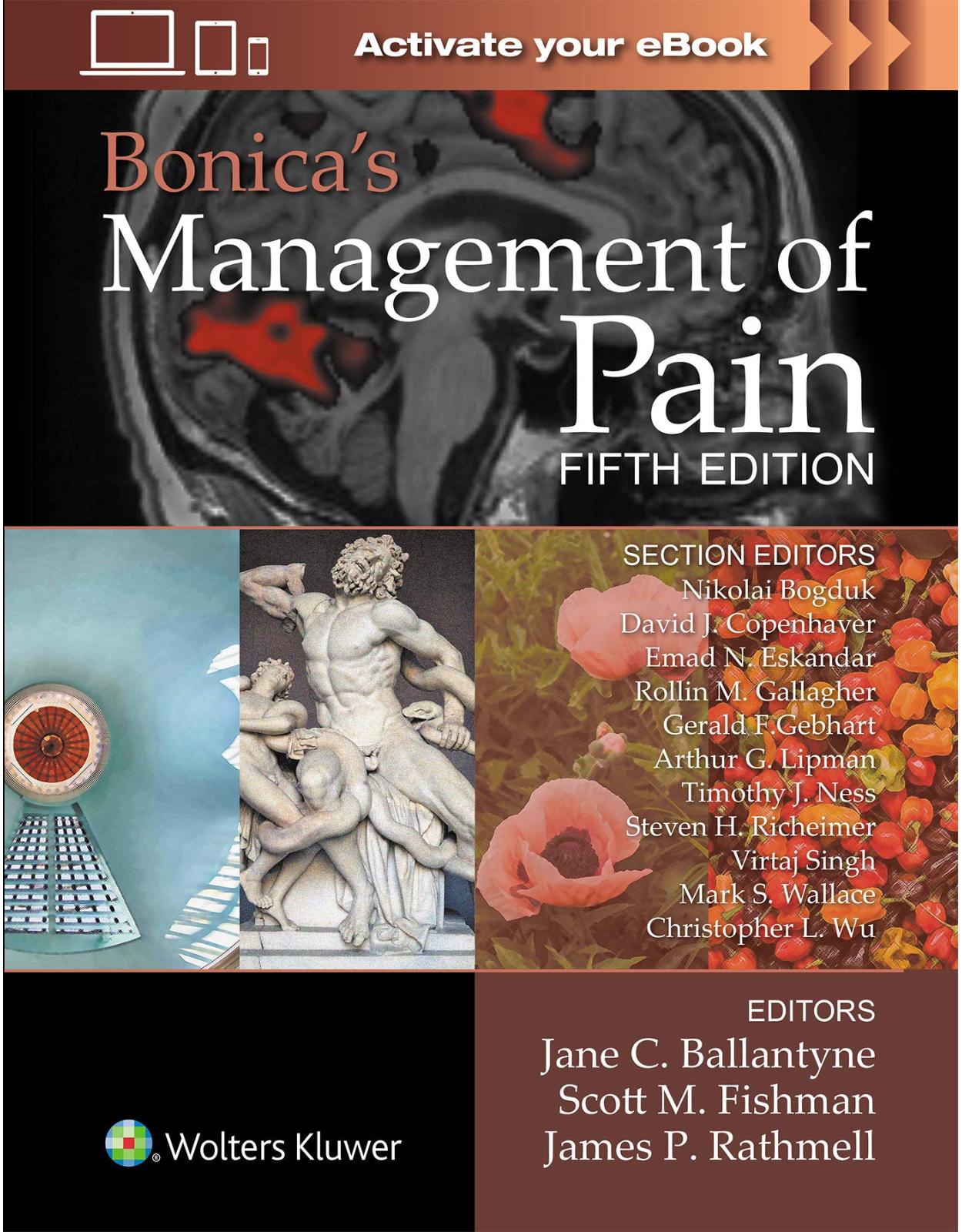
Bonica’s Management of Pain, Fifth edition
Livrare gratis la comenzi peste 500 RON. Pentru celelalte comenzi livrarea este 20 RON.
Disponibilitate: La comanda in aproximativ 4 saptamani
Editura: LWW
Limba: Engleza
Nr. pagini: 1896
Coperta: Hardcover
Dimensiuni: 21.84 x 7.62 x 28.19 cm
An aparitie: 2018
Description:
Publisher's Note: Products purchased from 3rd Party sellers are not guaranteed by the Publisher for quality, authenticity, or access to any online entitlements included with the product. This exhaustively comprehensive edition of the classic Bonica’s Management of Pain, first published 65 years ago, expertly combines the scientific underpinnings of pain with clinical management. Completely revised, it discusses a wide variety of pain conditions—including neuropathic pain, pain due to cancer, and acute pain situations—for adults as well as children. An international group of the foremost experts provides comprehensive, current, clinically oriented coverage of the entire field. The contributors describe contemporary clinical practice and summarize the evidence that guides clinical practice.
Table of Contents:
PART ONE Basic Considerations
Chapter 1 Intellectual Milestones in Our Understanding and Treatment of Pain
Pain Understood as Part of a Larger Philosophy or Worldview
Mechanistic Views of Pain
19th Century—Pain as a Specific Sense
Afferent Signaling
Gate Control Theory
Treatments for Pain
Cognitive Treatment for Pain
Pharmacologic Treatment of Pain
Anatomically Specific Treatments for Pain
The Specialty of Pain Medicine
Acknowledgments
References
Chapter 2 Pain Terms and Taxonomies of Pain
Definition of Commonly Used Pain Terms
Taxonomies
Expert-Based Classifications of Pain
Classification Based on Anatomy
Classification Based on Duration
Classification Based on the Etiology of Pain
Classification Based on Body System
Classification Based on Severity
Classification Based on Functioning
Classification Based on Intensity and Functioning
Classification Based on Prognosis
Mechanism-Based Classification of Pain
Comprehensive, Multidimensional Classification of Pain: International Association for the Study of Pain Taxonomy
Comprehensive, Multidimensional Classification of Pain: Acttion-American Pain Society and Acttion-American Pain Society-American Academy of Pain Medicine
Inductive Empirically Based Classifications of Pain
Psychometric Considerations
Conclusion
References
Chapter 3 Peripheral Pain Mechanisms and Nociceptor Sensitization
Functional Characterization of Nociceptors
Identification of Putative Nociceptors
Nociceptor Characteristics
Anatomy of the Nociceptor
Stimulus Transduction
Passive Electrophysiologic Properties and the Spread of the Generator Potential
Action Potential Generation
Action Potential Propagation
Transmitter Release
Nociceptor Sensitization
Clinical Implications of Nociceptor Function
References
Chapter 4 Substrates of Spinal Cord Nociceptive Processing
Defining Nociceptive Systems
Models of Pain Processing
Methods of Neuronal Characterization
Defining Nociceptive Second-Order Neurons
Development of Sensory Systems
Targets of Primary Afferent Input
Gross Anatomy of the Spinal Cord
Spinal Laminae
Functional Characterization of Nociceptive Neurons
Classification According to Site of Projection
Targets of Axonal Projections
Intraspinal Pathways
Spinothalamic Tract
Spinoreticular and Spinomesencephalic Tracts
Postsynaptic Dorsal Column Neurons
Other Ascending Pathways
Neurochemistry of Second-Order Neurons
Neurotransmitters from Primary Afferents
Neurotransmitters from Interneurons
Neurotransmitters from Supraspinal Sources
Neurotransmitters from Glia or Unknown Sources
Other Important Receptors/Channels
What is Important to the Clinician
Acknowledgments
References
Chapter 5 Modulation of Spinal Nociceptive Processing
Spinal Cord–Based Modulatory Mechanisms
Acute Segmental Modulatory Effects
Heterosegmental Modulatory Systems
C-Fiber Wind-Up and Central Sensitization
Supraspinal Modulatory Systems
Tonic Descending Influences
Supraspinal Substrates Mediating the Descending Modulation of Pain
Summary of Supraspinal Influences
On, Off, and Neutral Cells
Triggers of Clinical Hypersensitivity
Allodynia and Hyperalgesia
Inflammation-Induced Hypersensitivity and Inhibitory Systems
Stress-Induced Analgesia and Hyperalgesia
Neuropathic Pain
Opioid-Induced Hyperalgesia
Conclusion
References
Chapter 6 Supraspinal Mechanisms of Pain and Nociception
Functional Imaging of Pain in Humans
Methodologies of Noninvasive and Invasive Functional Brain Imaging in Pain
Brainstem
Periaqueductal Gray Matter—A Key Structure of Endogenous Analgesia
Mesolimbic Dopamine System
Hypothalamus
Thalamus
The Lateral Pain System—The Sensory-Discriminative Pathway
Spinal Connections to Brainstem and Medial Thalamus—The Affective Pathway
Cortex
Sensory Areas
Limbic Areas
Vigilance, Arousal, and Attention in Pain Processing
Pain Plasticity
Summary and Conclusion
References
Chapter 7 Psychological Aspects of Pain
Cognitive Factors: Predispositions, Appraisals, Beliefs, Perceived Control, and Self-Efficacy
Predispositions
Appraisal and Beliefs
Catastrophizing and Fear-Avoidance Beliefs
Perceived Control and Self-Efficacy
Coping
Stress and Autonomic Responses: Hypothalamic-Pituitary-Adrenal Axis Dysregulation
Emotion
Anxiety
Depression
Anger and Hostility
Psychogenic Conceptualizations of Chronic Pain
Psychogenic View
Behavioral Formulations
Classical Conditioning
Operant Conditioning
Social (Observational) Learning
Gate Control Theory
Cognitive-Behavioral Perspective
Treatments Based on the Cognitive-Behavioral Perspective
Biopsychosocial, Contextual Model
Families and Family Systems Perspective
Conclusion
References
Chapter 8 Individual Differences in Pain: The Roles of Gender, Ethnicity, and Genetics
Sex and Gender Differences in Pain
Clinical Pain
Experimental Pain
Responses to Pain Treatment
Biopsychosocial Mechanisms
Ethnic Group Differences in Pain
Clinical Pain
Experimental Pain
Responses to Pain Treatment
Biopsychosocial Mechanisms
Genetic Contributions to Pain
Clinical Pain
Experimental Pain
Interactions among Individual Difference Factors
Conclusion
Acknowledgments
References
Chapter 9 Functional Neuroanatomy of the Nociceptive System
Organization of the Peripheral Nociceptive System
Peripheral Nervous System Structures of Pain Sensation
Functional Anatomy of the Central Nervous System
Dorsal Horn
Spinothalamic Tract
Thalamus
Sensory Cortex
Descending Pathways of the Central Nervous System
Central Pain
Central Pain After Spinal Cord Injury
Autonomic Nervous System
Peripheral Autonomic Nervous System
Parasympathetic Division
Cranial Parasympathetics
Sacral Parasympathetics
Sympathetic (Thoracolumbar) Division
Sensation in Visceral Organs
Autonomic Centers in the Central Nervous System
Transmission in the Peripheral Autonomic Nervous System
Physiology of the Autonomic Nervous System
Enteric Nervous System
Conclusion
References
Chapter 10 Clinical Trials
Uncontrolled Studies Paradigm
Control Groups: An Improvement over the Case Series
Randomized Allocation of Treatment and Control Groups
Other Methods for Reducing Bias in Clinical Trials
Baseline Similarity of Study Groups
Blinding
Were Groups Treated Equally Except for the Experimental Treatment?
Low Loss to Follow-Up and Intention-to-Treat Analysis
Other Issues in Clinical Trials
Measurement of Outcomes
Reporting the Results
Statistical Power
Generalizability of Results and Efficacy Versus Effectiveness
Subgroup Analyses
Effects of Funding Source
Assessment of Harms
Trial-Based Cost-Effectiveness Analysis
Alternative Study Designs
Cluster Trials
Crossover Trials
Factorial Design
New Directions in Clinical Trials
Pragmatic Trials
Enriched Enrollment Randomized Withdrawal Trials
Expertise-Based Trials
Comparative Effectiveness
Equivalence and Noninferiority Trials
Stepped Wedge Design
Bayesian Statistical Inference and Adaptive Designs
Systematic Reviews
Conclusion
References
PART TWO Economic, Political, Legal, and Ethical Considerations
Chapter 11 Transdermal Pain: A Sociocultural Perspective
What is Transdermal Pain?
Ethnicity, Race, Sex, Gender, Age: Whose Pain?
Across Cultures: Beliefs, Attitudes, Perceptions, Behaviors
Pain and Narrative: Culture, Meaning, Ethics
Beyond the Gate: Consciousness and the Limits of a Molecular Gaze
Pain and Globalization: Power, Money, Systems
Conclusion: Summary and Synthesis
Acknowledgment
References
Chapter 12 Ethical Issues in Pain Management
Pain, Suffering, and the Core Values of Health Care
The Duty to Relieve Pain and Suffering
Curative Versus Palliative Paradigms of Patient Care
The Phenomenon of Undertreated Pain
Identifying the Barriers to Pain Relief
Ethical Implications of the Barriers
Embracing a New Ethic of Pain Relief
Conclusion
References
Chapter 13 Ethical Issues in the Care of Dying Patients
Introduction
The Quest for Moral Order Amid Existential Disorder
The Contributions and Limitations of Ethical Analysis in End-of-Life Care
The Transition from Curative to Palliative and End-of-Life Care
Negotiating Treatment Preferences: The Ideal Decision-Making Process
Departures from the Ideal
Communication with Patients About Treatment Preferences Near the End of Life
Surrogate Decision Making
Assessing Decisional Capacity
Ruling Out or Eliminating Reversible Causes of Incapacity
Identifying a Surrogate
The Surrogate’s Roles and Responsibilities
A Realistic Process of Advance Care Planning
Responding to Demands for Nonbeneficial Treatment
The Ethical Basis of the Conflict
The Clinical Context of the Conflict
Differential Diagnosis of the Conflict
Physician-Assisted Death
Terminology
Ethical Considerations Along the Clinical Spectrum
Two Levels of Response: Social Policy and Clinical Care
Conclusion: Beyond the Patient–Physician Dyad
References
Chapter 14 Laws and Policies Affecting Pain Management in the United States
Introduction
Prevalence of Unrelieved Pain is a Public Health Problem
Barriers to the Safe and Effective use of Opioid Analgesics for Pain Management
Policies Governing the use of Opioid Analgesics for Pain Management
International Treaties: Establishing Balance Between Drug Control and Medical Use
US Federal Law: Preserving Balance Between Drug Control and Medical Use
The Federal Food, Drug, and Cosmetic Act
US Federal Controlled Substances Law
US State Laws: Striving for Balance Between Drug Control and Medical Use
State Pain Policy Development: An Emerging Trend
Evaluating the Quality of State Pain Policy
A Progress Report Card to Measure Changes in the Quality of State Pain Policies
The Importance of Improving State Pain Policy
Considering Additional US Policies
Taking Diversion into Account
Conclusions
References
Chapter 15 Litigation Involving Pain Management
Administrative Proceedings
In the Matter of Dileo
Hoover V Agency for Health Care Administration
Oregon Board of Medical Examiners V Bilder
Accusation of Eugene Whitney, MD
Civil Litigation
Estate of Henry James V Hillhaven Corporation
Bergman V Chin, MD, and Eden Medical Center
Tomlinson V Bayberry Care Center, et al.
Criminal Litigation
State V Naramore
Federal Criminal Prosecutions
United States V Rosen (1978)
United States V Hurwitz
United States V Mciver
Constitutional Cases
Lessons from the Litigation
References
Chapter 16 International Access to Therapeutic Opioids
Pain Relief is Part of Cancer and HIV/AIDS Control
Pain and Palliative Care
Opioids are Essential Medicines and Controlled Substances
Governments Must Ensure Adequate Opioid Availability
Disparities in Opioid Consumption
Morphine Equivalence Metric
Global Opioid Consumption Trends
Disparities in Consumption by Income Level
Regional Opioid Consumption Trends
World Health Organization Region for Africa (AFRO)
World Health Organization Region for the Americas (AMRO)
World Health Organization Region for the Eastern Mediterranean (EMRO)
World Health Organization Region for Europe (EURO)
World Health Organization Region for Southeast Asia (SEARO)
World Health Organization Regions for the Western Pacific (WPRO)
Barriers to Opioid Availability and Accessibility
Knowledge and Attitudes About Pain, Opioids, and Dependence Syndrome
Excessively Strict Laws or Regulatory Policies
Medication Distribution System Barriers
Economic Factors Including Affordability
United Nations’ Recommendations
Efforts to Address Barriers and Improve Opioid Availability and Accessibility
Conclusion
References
PART THREE Evaluation of the Pain Patient
Chapter 17 Evaluation of the Chronic Pain Patient
Introduction
General Guidelines for Assessment of Persistent Pain
Outline of a Multidimensional Assessment Questionnaire for Persistent Pain History
Summary of Some Nonproprietary Questionnaires
Other Potentially Useful Questions to Consider for Gauging Effectiveness of Therapy
Summary of Proprietary Questionnaires to Consider
The Pain History
O: Onset of Pain
P: Provocative/Palliative
Q: Quality or Character
R: Region/Radiation
S: Severity/Intensity of Pain
T: Timing of Pain
Altered Perception
Past Medical and Surgical History
Mood Assessment
Psychosocial Factors
Coping Strategies
Sleep Disorders
Cognitive Impairment
Vocational History and Current Vocational Disability
Habits
Risk of Opioid Misuse, Abuse, or Dependence
Assessment of Function
Current and Past Treatments
Current and Past Medications Including Over-the-Counter Medications
Allergies
Investigations and Consultations
Goals
Physical Examination
General Exam: Observe, Identify and Document
Site of Pain
Neurologic Exam
Bedside Method for Quantitative Sensory Testing
Caveats to Quantitative Sensory Testing Interpretation
Further Investigations or Consults
Follow-Up Visits
Conclusion
Appendix 17.1: Initial Visit Questionnaire
Appendix 17.2: Pain Diagram
Appendix 17.3: Goal Setting
Goals
Appendix 17.4: Follow-Up Questionnaire
References
Chapter 18 Electrodiagnosis in Pain Medicine
The Electrodiagnostic Laboratory
Electrodiagnostic Tests
Nerve Conduction Studies
Needle Electromyography
Application in Selected Conditions
Conclusion
References
Chapter 19 Diagnostic Imaging of Pain
Headache
Acute Headache
Chronic Headache
Intracranial Hypotension
Intracranial Hypertension (Pseudotumor Cerebri)
Facial Pain
Spinal Pain
Overview
Compression Fractures
Benign Versus Malignant; Infection/Inflammation
Discogenic Pain
Limb Pain and Magnetic Resonance Neurography
Magnetic Resonance Neurography
Thoracic Outlet Syndrome
Piriformis Syndrome
Peripheral Nerve Entrapment Syndromes
Imaging Guided Injection
Future Application of Pain Imaging
Conclusion
References
Chapter 20 Measurement of Pain
Introduction
Validity, Reliability, and Utility in the Context of Pain Assessment
How many Pain Problems should be Assessed?
Which Pain Domain(s) should be Assessed?
Recall Ratings Versus Summary Scores from Multiple Ratings using Diaries
Measuring Pain’s Domains
Measuring Pain Intensity
Measuring Pain Affect
Measuring Pain Quality
Measuring Pain’s Spatial Characteristics
Measuring Pain’s Temporal Characteristics
Measuring Pain Interference
Measuring Pain in Special Populations
Simplified Measures of Pain
Behavior Observation Measures
Summary and Conclusions
References
Chapter 21 Pain Psychology Evaluation
Psychosocial History
Early Life Experiences
Vocational History
Educational History
Current Functioning
Belief Structures
Social Support
Cultural Factors
Substance Use
Nicotine
Alcohol
Prescribed and Nonprescribed Drug Use
Psychiatric Functioning
Behavioral Observations
Depression
Anxiety
Posttraumatic Stress Disorder
Somatization
Psychological Screening for Advanced Interventional Procedures
Conclusion
References
Chapter 22 Disability Evaluation of Patients with Chronic Pain
Basic Concepts
Conceptual and Empirical Issues
Impairment and Disability
Associations between Impairment and Disability
The “Embeddedness” Problem
Practical Problems in Identifying the role of Pain in Disability Determinations
Methods for Evaluating Chronic Pain in Applicants for Disability Benefits
Evaluation Methods in the Social Security Administration
Outcomes of Social Security Administration Evaluations
Disability Evaluation and Disability Management in the Washington State Department of Labor and Industries
Washington State Department of Labor and Industries Programs to Reduce Disability
Methods Used by Washington State Department of Labor and Industries to Evaluate Injured Workers for Permanent Disability Benefits
Outcomes of Washington State Department of Labor and Industries Evaluations
Conclusion
References
Chapter 23 Multidisciplinary Assessment of Patients with Chronic Pain
Conceptual Issues
Conundrums in the Assessment of Pain
A Conceptual Model for Assessing Pain
Assessment of Medical Factors
Are there Red Flags?
Are there Risk Factors for Delayed Recovery?
Specific Evaluation Procedures
Conclusion
Assessment of Central Nervous System Sensitization
Assessment of Psychosocial Factors
Psychological Factors as Causes Versus Consequences of Chronic Pain
Elements of the Psychological Evaluation
Problem Areas to Assess
Assessing Functional Impact
Self-Report Measures of Function
Assessment of Physical Capacity
Assessment of Social Factors
Organization of Multidisciplinary Evaluations
Conclusion
References
PART FOUR Pain Conditions
Neuropathic Pain Conditions
Chapter 24 Painful Neuropathies
Pain as a Symptom of Neuropathy
The Evaluation and Diagnosis of Neuropathy
Neuropathy Classification
History, Examination, and Diagnostic Studies
Painful Neuropathies
Distal Symmetric Polyneuropathies
Other Widespread but Nonlength-Dependent Neuropathies
Painful Mononeuropathy Multiplex and Focal Neuropathic Syndromes
Sensory Neuronopathies
Treatment of Painful Neuropathies
General Principles of Therapy
Analgesia Therapy: Guidelines for Pharmacotherapy
Unresolved Questions
References
Chapter 25 Complex Regional Pain Syndrome
Epidemiology
Pathophysiology
Animal Models
Human Models
Inflammation
Immunologic Factors
Central Dysfunction
Sympathetic Dysfunction
Trophic, Dystrophic, and Nutritional Abnormalities
Motor and Movement Disorders
Immobilization and Disuse
Diagnosis
The International Association for the Study of Pain Criteria
The Budapest Criteria
Sequential Stages and Subsets of Complex Regional Pain Syndrome
Psychological Factors in Complex Regional Pain Syndrome
Treatment
The Rationale for Functional Restoration
Rehabilitation-Based Treatment Modalities
Pharmacotherapy
Psychological Interventions
Interventional Therapies
Other Therapeutic Modalities
References
Chapter 26 Phantom Pain
Epidemiology
Modulation of Phantom Pain
Pathophysiology of Phantom Pain
Prevention of Phantom Pain
Treatment of Phantom Pain
Pharmacologic Interventions
Antidepressants
Antiepileptic Drugs
Opioids
NMDA Receptor Antagonists
Calcitonin
Transient Receptor Potential Cation Channel Subfamily V Member 1 (trpv1) Modulators
Interventional Therapy
Neuromodulation
Surgical Interventions
Behavioral Medicine Interventions
Miscellaneous Treatments for Residual Limb Pain
Summary
References
Chapter 27 Herpes Zoster and Postherpetic Neuralgia
Clinical Picture and Natural History of Herpes Zoster
Prodrome
Rash
Pain
Distribution of Herpes Zoster
Clinical Variants
Diagnosis of Herpes Zoster
Laboratory Testing
Epidemiology of Herpes Zoster
Pathophysiology of Herpes Zoster and Mechanisms of Acute Pain
Complications Associated with Herpes Zoster
Ophthalmic Complications
Motor Neuropathy
Rare Neurologic Complications
Visceral Complications
Decreased Quality of Life
Treatment of Herpes Zoster
Patient Education
Antiviral Therapy
Analgesic Treatment
Corticosteroids
Neural Blockade
Complementary and Alternative Medicine
Spinal Cord Stimulation
Prevention of Herpes Zoster
Childhood Vaccination
Varicella-Zoster Immunoglobulin
Herpes Zoster Vaccination for Adults
Clinical Picture of Postherpetic Neuralgia
Diagnosis and Assessment of Postherpetic Neuralgia
Epidemiology and Natural History of Postherpetic Neuralgia
Risk Factors for Postherpetic Neuralgia
Pathophysiology of Postherpetic Neuralgia
Treatment of Postherpetic Neuralgia
Anticonvulsants: Gabapentin and Pregabalin
Antidepressant Medications
Opioid Analgesics
Tramadol
Tapentadol
Topical Therapies
Combination Therapy
N-Methyl-D-Aspartic Acid Antagonists
Other Pharmacologic Therapies
Invasive Treatments for Postherpetic Neuralgia
Psychological Interventions
Electroanalgesia
Surgical Approaches
Prevention of Postherpetic Neuralgia
Conclusions
References
Chapter 28 Central Pain States
Diagnosis
Clinical Characteristics
Clinical Assessment
Specific Central Pain Conditions
Central Poststroke Pain
Central Pain in Multiple Sclerosis
Central Pain in Spinal Cord Injury
Other Central Pain Conditions
Preclinical Models
Mechanisms
Treatment of Central Pain
Pharmacologic Treatment
Psychological and Physiotherapy Treatment
Neurosurgical Management
References
Psychological Contributions to Pain
Chapter 29 The Psychophysiology of Pain
Historical Perspective: Mind–Body Issues
Emotions: Definition and Mechanisms
What are Emotions?
Emotion in a Sociobiologic Perspective
Adaptive Functions of Emotion
Emotions and Behavior
The Central Neuroanatomy of Emotion: Limbic Structures
Peripheral Neuroanatomy of Emotion: The Autonomic Nervous System
Noxious Signaling and Central Limbic Processing
Locus Coeruleus and the Dorsal Noradrenergic Bundle
The Ventral Noradrenergic Bundle and the Hypothalamo-Pituitary-Adrenocortical Axis
Primary and Secondary Features of the Affective Dimension of Pain
Summary of the Construction and Modulation of Pain
Emotion and Cognition
The Sense of Self
Cognitive Perspective
Multiple Perspectives on the Self
Stress, Sickness, and Pain
Basic Definitions: Stress, Homeostasis, and Allostasis
Physiologic Mechanisms of Stress
Summary of the Physiologic Mechanisms of Stress
Stress and Chronic Pain
Future Directions
References
Chapter 30 Pain and Learning
Overview of the Three Major Principles of Learning
Classical Conditioning
Operant Conditioning
Observational Learning
Operant Conditioning and Pain
The Hallmark Work of Wilbert Fordyce
Operant Conditioning and Chronic Pain: The Basics
Classical Conditioning and Pain
Aversive Classical Conditioning and Pain
Classically Conditioned Fear/Avoidance and Pain
Observational Learning and Pain
Integrating Learning Principles in the Treatment of Pain
Cognitive-Behavioral Therapy and Pain
Cognitive-Behavioral Therapy as an Essential Component of a Comprehensive Interdisciplinary Approach to Pain Management
Conclusion
References
Chapter 31 Psychiatric Illness, Depression, Anxiety, and Somatic Symptom Disorder
Psychiatric Nosology and Diagnostic and Treatment Approaches
Framework for Describing Psychiatric Symptoms
Depression
Suicidal Ideation and Behavior
Which Came First, Depression or Pain?
Differential Diagnosis
Biologic Tests for Depression
Dysthymic Disorder
Epidemiology of Depression
Pain and Depression: Mechanisms of Association
Depression Treatment
Psychotherapy
Anxiety Disorders
Generalized Anxiety Disorder
Panic Disorder
Epidemiology
Treatment
Posttraumatic Stress Disorder
Diagnosis
Epidemiology of Posttraumatic Stress Disorder in Chronic Pain Patients
Posttraumatic Stress Disorder and Associations with Pain
Treatment
Personality Disorders
Epidemiology
Overview of Personality Disorders
Personality and Pain Treatment Outcome
Somatic Symptom Disorders, Illness Behavior, and Sick Role
Definitions
Overview of Somatoform Disorders and Somatic Symptom Disorders
Somatic Symptom Disorder
Conversion Disorder (Functional Neurologic Symptom Disorder)
Illness Anxiety Disorder
Conclusion: Pain and Suffering and Psychiatry
References
Chapter 32 Treatment of Pain in Patients with Addiction
Substance Use Disorder
Clinical Implications of Substance Use Disorders on Pain
Neurobiologic Overlap Between Pain and Addiction Systems
Effects of Substance Use Disorder on Pain
Effects of Opioid Use Disorder on Pain
Pain Management in Persons with Substance Use Disorder
Prevalence of Substance Use Disorders in Patients with Pain
Principles of Pain Treatment in Patients with Substance Use Disorders
Conclusions
References
Chapter 33 The Doctor–Patient Relationship in Pain Management: Dealing with Difficult Clinician–Patient Interactions
Difficult Patients and Difficult Doctor–Patient Relationships
Psychiatric and Personality Issues
Opioid Therapy
Difficult “Normal” Patients
Comorbid Medical Conditions
Substance Use Disorders
Physician Factors
Health Care System Factors
Patient Interaction Strategies
Patient-Focused Care
Communication Framework: WIPS and E’s
Clinical Scenarios
Scenario 1
Scenario 2
Scenario 3
Scenario 4
Scenario 5
Scenario 6
Scenario 7
Summary and Conclusions
Acknowledgment
References
Vascular, Cutaneous, and Musculoskeletal Pains
Chapter 34 Arthritis
Basic Considerations
Problem in Perspective
Joint Anatomy
Clinical Approach to Joint Pain
History
Physical Examination
Examination of Synovial Fluid
Clinical Considerations
Osteoarthritis
Secondary Osteoarthritis
Rheumatoid Arthritis
The Spondyloarthropathies
Reactive Arthritis
Psoriatic Arthritis
Arthritis Associated with Inflammatory Bowel Disease
Arthritis Caused by Crystals
Urate Gout
Infectious Arthritis
Polymyalgia Rheumatica
References
Chapter 35 Myofascial Pain Syndrome
Brief Historical Overview
Basic Myofascial Pain Concepts
Muscle Physiology
The Motor Endplate
Sensitization and Activation of Muscle Nociceptors
Central Sensitization
The Biochemical Milieu of Myofascial Trigger Points
pH and Muscle Pain
Neuropeptides, Inflammatory Mediators, and Tissue Injury and Pain
Catecholamines and the Autonomic Nervous System
Cytokines and Pain
Clinical Management
Trigger Point Diagnosis
Physical Examination and Diagnosis
Treatment Options
Noninvasive Treatment Options
Summary
References
Chapter 36 Fibromyalgia: A Discrete Disease or the End of the Continuum
Historical Perspective
Epidemiology
Chronic Widespread Pain
Fibromyalgia
Significance of Tender Points
Other Features of Fibromyalgia Gleaned From Epidemiologic or Observational Studies
Etiology
Animal Models of Fibromyalgia
Genetic Factors
Evidence of Central Nervous System Disturbances in Pain and Sensory Processing
Evidence of a Global Increase in Sensory Processing of Nonpainful Stimuli
Brain Imaging Studies
The Role of Neuroendocrine or Autonomic Abnormalities
The Role of Peripheral Factors in Fibromyalgia
Evidence of Abnormal Cytokines or of Immune Dysfunction in Fibromyalgia
The Role of “Small Fiber Neuropathy” in Fibromyalgia
Diagnosis
Diagnosis of Fibromyalgia
Treatment
General Approach
Pharmacologic Therapy
Neurostimulatory Therapies
Nonpharmacologic Therapies
Prognosis
Conclusion
Key Points
References
Chapter 37 Pain of Dermatologic Disorders
Basic Considerations: Anatomy and Physiology of the Skin
Clinical Disorders
Leukocytoclastic Vasculitis
Polyarteritis Nodosa
Antineutrophilic Cytoplasmic Antibodies-Associated Vasculitides: Granulomatosis with Polyangiitis (Formerly known as Wegener’s Granulomatosis)
Microscopic Polyangiitis
Eosinophilic Granulomatosis with Polyangiitis (Formerly known as Churg-Strauss Syndrome)
Rheumatoid Vasculitis
Livedoid Vasculopathy
Other Vascular Disorders
Antiphospholipid Syndrome
Warfarin (Coumadin) Skin Necrosis
Cocaine Levamisole Toxicity
Calcinosis Cutis
Calciphylaxis
Ulcers
Ischemic Ulcers
Venous Ulcers
Pyoderma Gangrenosum
Painful Infections
Necrotizing Soft Tissue Infection/Necrotizing Fasciitis
Herpes Zoster
Herpes Simplex
Erysipelas and Cellulitis
Furunculosis and Carbuncle
Erysipeloid
Inflammations
Panniculitis
Dercum Disease (Adiposa Dolorosa)
Hidradenitis Suppurativa
Inflamed Epidermal Cyst
Bullous Dermatoses with Erosions
Disorders of Connective Tissue Structure (Cartilage Disorders)
Relapsing Polychondritis
Chondrodermatitis Nodularis Helicis
Neurovascular Cutaneous Disease
Sensory Mononeuropathies
Erythromelalgia
Fabry’s Disease
Other Painful Dermatologic Disorders
Cutaneous Endometriosis
Painful Neoplasms
Acknowledgments
References
Chapter 38 Pain Due to Vascular Causes
Basic Neuroanatomic and Neurophysiologic Considerations
Vascular Pain Syndromes
Intermittent Claudication
Aortic and Other Large Artery Pain
Rest Pain, Ulcers, and Gangrene
Pain Syndromes Following Stroke
Pain Associated with Diseases Involving Small Arteries
Pain Associated with Venous Disorders
Pain Associated with Lymphatic Diseases
Pain Associated with Amputation
Differentiating Vascular from Nonvascular Pain
The Relief of Vascular Pain
Conclusion
References
Chapter 39 Pain Due to Thoracic Outlet Syndrome
Anatomy and Pathophysiology
Clinical Presentation: Symptoms and Signs
Diagnostic Tests
Differential Diagnosis
Management
Outcomes
References
Chapter 40 Pain Following Spinal Cord Injury
Extent and Impact of the Problem
Assessment and Classification of Pain Following Spinal Cord Injury
Musculoskeletal Pain
Visceral Pain
Other Nociceptive Pain
At- and Below-Level Spinal Cord Injury Pain
Other Neuropathic Pain
Psychosocial Aspects of Pain after Spinal Cord Injury
Management of Pain in People with Spinal Cord Injury
Nociceptive Pain
Visceral Pain
Other Nociceptive Pain
Other Neuropathic Pain and other Pain
At- and Below-Level Neuropathic Pain
Psychological and Environmental Management
Other Nonpharmacologic Management of Pain in People with Spinal Cord Injury
Surgical Interventions
Conclusion
References
Pain Due to Cancer
Chapter 41 Epidemiology, Prevalence, and Cancer Pain Syndromes
Epidemiology of Cancer Pain
Pain Related to Extent of Disease: The Cancer Disease Trajectory
Special Needs of Particular Age Groups: Pediatric, Young Adult, Adult, Geriatric
Special Needs of Particular Ethnic Groups: Communication Styles, Common Preferences, and Managing Taboos
Comorbidities Associated with Specific Cancers: Lung Disease, Liver Disease, Renal Disease, and Neurologic Disease
Cancer Pain and Substance Abuse
Cancer Pain in Inmates
Components of the Comprehensive Medical Evaluation of a Patient with Chronic Cancer Pain
Pain History
Definition of Pain
Definition of Suffering
Validated Assessment Tools
Types of Pain
Presenting Complaint
Details of the Pain History
Physical Examination
General Physical Examination
The Regional Pain Physical Examination
Bedside Provocative Maneuvers
Specific Bedside Provocative Maneuvers and their Role in Pain Diagnosis
Formulating a Cancer Pain Diagnosis
Syndrome Diagnosis
Pathophysiologic Diagnosis
Complementary Clinical Perspectives in the Care of Cancer Patients
The Medical Model: Pain is a Manifestation of Disease
Palliative Model: Pain is both Useless and Harmful
Rehabilitative (“Chronic Nonmalignant Pain”) Model: Focus on Dysfunctional Pain Behavior and Pain-Related Deconditioning
Anesthetic Model: Diagnostic and Therapeutic Blocks
Management of Pain in Specific Clinical Presentations
Bone Pain
Pain and Delirium
Pain and Nausea
Pain and Anorexia/Cachexia/Asthenia
Pain and Bowel Disease
Managing Cancer Pain in the Addict
Safe Prescribing Practices: Universal Precautions
Symptom Clusters
Pain at the end of Life
Cancer Pain Emergencies
Opioid Diversion at the End of Life
Conclusion
References
Chapter 42 Assessment and Diagnosis of the Cancer Patient with Pain
Issues in Assessment and Diagnosis of Cancer Pain
Pain and the Cancer Patient
Molecular Mechanism of Tumor Pain
Somatic Pain
Visceral Pain
Neuropathic Pain
Affective Processing and Suffering
Psychological Factors and the Complexities of Cancer Pain
Depression in Cancer Patients
Detecting and Assessing Depression in the Cancer Patient
Cancer-Related Fatigue
Sleep Disturbance in Cancer
Sources of Pain in the Cancer Patient
Classification of Cancer Pain by Feature
Chronicity
Intensity/Severity
Pathophysiology/Mechanisms
Tumor type and Stage of Disease
Patterns of Cancer Pain
Cancer Pain Syndromes
Bone Metastases
Characteristics of Metastatic Bone Pain
Prognosis
Sacral Insufficiency Fractures
Granulocyte Colony-Stimulating Factors–Associated Bone Pain
Visceral Pain
Mechanism
Visceral Pain Descriptions by Site
Neuropathic Pain
Neuropathic Pain Secondary to Cancer-Related Pathology in Cranial Nerves
Neuropathic Pain Secondary to Therapeutic Interventions
Oral Mucositis
Graft-Versus-Host Disease
Metastatic Epidural Spinal Cord Compression
Mechanism
Pattern of Pain
Presentation and Physical Findings
Investigations
Prognosis
Stepwise Approach to Pain Assessment
Features of Pain History
Quality of Life Assessment
General Assessment
Associated Symptoms
Laboratory and Imaging Data
Physical Examination
Diagnosis
Summary
References
Chapter 43 Cancer Pain: Principles of Management and Pharmacotherapy
Cancer Pain Management Overview
Primary Anticancer Treatment
Symptomatic Cancer Pain Management
World Health Organization Analgesic Ladder
Nonsteroidal Anti-Inflammatory Drugs
Efficacy in Cancer Pain
Acetaminophen
Opioid-Induced Bowel Dysfunction
Antiemetics
Adjuvant Analgesics
General Purpose Adjuvants
Musculoskeletal Pain Adjuvants
Neuropathic Pain Adjuvants
Bone Pain Adjuvants
Visceral Pain Adjuvants
Psychotropic Drugs
Cannabinoids
Opioid Analgesics
Selection of Opioid Therapy in Cancer Pain Management
Tolerance and Hyperalgesia
Morphine
Oxycodone
Oxymorphone
Hydromorphone
Methadone
Levorphanol
Fentanyl
Buprenorphine
Hydrocodone
Codeine
Tramadol
Tapentadol
Opioids not Recommended for Routine use in Cancer Pain Control
Opioid-Related Side Effects
Opioid Effects on Cognition, Motor Skills, and Driving Ability
Opioid Rotation in Cancer Pain
Parenteral Opioid Therapy
Intracerebroventricular Opioids
Substance Abuse in Oncology
Home Infusion Therapy
Integrative Oncology
Summary
References
Chapter 44 Interventional Pain Therapies
Intrathecal Drug Therapy
Indications
Intrathecal Drug Delivery Systems
Intrathecal Versus Epidural Drug Delivery
Implantable or Exteriorized Intrathecal Drug Delivery: Cost Analysis
Outcome Studies
Patient-Controlled Intrathecal Analgesia
Pharmacology
Contraindications and Risk Management
Complications and Side Effects
Intrathecal Therapy and Ongoing Oncologic Care
Spinal Chemoneurolysis
Spinal Chemoneurolysis Technique
Adverse Effects
Contraindications
Celiac Plexus Block
Indications
Anatomy of the Celiac Plexus
General Considerations
Adverse Effects
Celiac Plexus Block Techniques
Outcome Studies
Superior Hypogastric Plexus Block
Indications
Anatomy of the Superior Hypogastric Plexus
General Considerations
Adverse Effects
Techniques
Outcome Studies
Ganglion of Impar Block
Indications
Anatomy of the Ganglion of Impar
General Considerations
Adverse Effects
Technique
Intercostal Nerve Block
Indications
Anatomy of the Intercostal Nerves
General Considerations
Adverse Effects
Technique
Outcome Studies
Blocks of the Head and Neck
Nerve Blocks of the Trigeminal Nerve and Its Branches
Indications
Anatomy of the Trigeminal Nerve and its Branches
General Considerations
Adverse Effects
Techniques
Outcome Studies
Other Head and Neck Interventional Targets
Spinal Cord Stimulation
Vertebral Augmentation
Indications
Contraindications
Outcomes
Spinal Cord Ablation
Cordotomy
Indications
Surgical Techniques
Outcomes
Complications
Myelotomy
Indications
Surgical Technique
Percutaneous Radiofrequency Lesioning
Open Limited Myelotomy
Outcomes
Complications
Dorsal Root Entry Zone Lesioning
Image-Guided Ablation of Painful Bone Metastases
Summary
References
Chapter 45 Pain Caused by Cancer of the Head and Neck and Oral and Oropharynx
Pain Mechanisms Due to Local and Regional Cancer of the Head and Neck
Tumor-Induced Algesia
Pain Mechanisms Due to Chemotherapy and/or Radiotherapy
Pain Due to Surgery
Pain Due to Mucositis
Epidemiology
Pathogenesis
Hematopoietic Cell Transplantation
Head and Neck Radiation Therapy
Combined Radiation Therapy, Surgery, and/or Chemotherapy
Pain Assessment
Management of Oral Mucositis
Pain Management
Basic Oral Care
Bland Oral Rinses
Topical Anesthetics and Analgesics
Topical Antimicrobials
Systemic Analgesics
Anti-Infective Approaches
Hyposalivation
Biologic Response Modifiers and Cytokines
Cognitive and Behavioral Interventions
Conclusion
References
Chapter 46 Cancer-Related Bone Pain
Epidemiology Review
Pathophysiology
Evaluation of the Patient with Bone Cancer
Treatment
Cyclooxygenase-2-Specific Inhibitors
Corticosteroids
Bisphosphonates
Calcitonin
Opioids/Opiate Antagonists
Adjuvant Analgesics
N-Methyl-D-Aspartate Antagonism and α2 Agonists
Hormonal Therapy
Radionucleotides
Procedural Interventions
Associated Processes
Granulocyte Colony-Stimulating Factor Related Pain
Conclusion
References
Chapter 47 Cancer-Related Visceral Pain
Epidemiology Review
Characteristics of Visceral Pain
Anatomy and Physiology
Sensitization
Localization
Visceral Afferentation
Ascending Pathways
Visceral Pain Syndromes
Oral Mucosa
Mediastinum
Pancreas
Liver Pain
Intestinal Pain
Pelvic Pain
Adrenal Pain Syndrome
Pain Syndromes Related to Intravenous Chemotherapeutic Agents
Complex Visceral Pain Syndromes
Postradiation Visceral Pain
Postchemotherapy Visceral Pain
Treatment
N-Methyl-D-Aspartate Receptor Antagonists
Corticosteroids
Gabapentin
Short Interfering RNA Therapeutics
T-Type Calcium Channel Antagonists
AMPA/Kainate Antagonists
P38 Kinase Inhibitors
Chemokine Receptor Type 2 Antagonists
P2x Purinoceptor 3 Antagonists
Newer Opioid Derivatives for the Treatment of Chronic Pain
Procedural Interventions
Conclusion
References
Chapter 48 Radiotherapy and Chemotherapy in Cancer Pain Management
Introduction
Bone Disease
Clinical Applications of Radiation Therapy
Response of Tumors to Radiotherapy
Trachea, Bronchi, and Lungs
Pancreatic Cancer
Pelvis
Skin and Subcutaneous Tissues
Brain Metastases
Bone Metastases
Single-Fraction Radiation
Stereotactic Radiation for Nonspine Bone Metastases
Reirradiation
Pathologic Fracture
Spinal Cord Compression
Radiation Tolerance of the Spinal Cord
Clinical Management
Treatment of Diffuse Bone Metastases
Wide-Field Radiotherapy
Radiopharmaceuticals
Role of Palliative Chemotherapy
Clinical Applications
Palliative Chemotherapy
Lymphoma
Breast Cancer
Head and Neck Cancer
Ovarian Cancer
Lung Cancer
Gastrointestinal Cancers
Prostate Cancer
Decision Making About Chemotherapy
Side Effects and Complications
Endocrine Therapy
Endocrine Therapy for Relief of Cancer Pain
Bisphosphonates
Summary
References
Chapter 49 Cancer Pain in Children
Overview of Childhood Cancer
Epidemiology
Treatment
Survivorship
Pain in Children: How Does this Differ from that in Adults?
Infants–Preschool
School Age–Adolescence
Pediatric Cancer Pain
Epidemiology of Pediatric Cancer Pain
Undertreatment and Impact of Pediatric Cancer Pain
Evaluation of Pediatric Cancer Pain
History and Physical Exam
Sensory Experience—Self-Report
Sensory Experience—Observation
Emotional and Cognitive Experience
Functional and Quality of Life Assessment
Past Pain-Directed Therapies
Cancer History—Diagnosis
Cancer History—Treatments
Past Medical, Psychiatric, Social, and Spiritual History
Proxy Reports
Integrating Data in Evaluation of the Whole Child
Incorporating Technology into Assessment
Etiologies of Cancer Pain
Disease-Related Pain
Procedure-Related Pain
Treatment-Related Pain
Pain from other Etiologies
Pain in Survivorship
Management of Pain
Pharmacologic Management of Cancer-Related Pain in Children
Overview of Opioid Analgesia in Children
Adverse Effects
Dependence and Addiction
Tolerance to Opioids
“Weak” Opioid
Adjuvant Therapies for Neuropathic Pain
Physical and Psychological Therapies for Pain in the Pediatric Cancer Patient
Acupuncture
Behavioral Interventions
Hypnotherapy
Expressive Arts Therapies
Massage
Biofeedback
Botanicals
Cannabis
Magnets
Spirituality/Religiosity
Therapeutic Yoga
Palliative Care for Children with Cancer
Summary
References
Acute Pain
Chapter 50 Acute Pain Management in Children
Pain Assessment in Infants and Children
Analgesic Pharmacology in Infants and Children
Nonopioid Analgesics
Ontogeny of Prostanoid Biosynthesis and Cyclo-Oxygenases
Aspirin and Other Salicylates
Acetaminophen
Nonsteroidal Anti-Inflammatory Drugs
Ketamine
Anticonvulsants
Opioids
Ontogeny of Opioid Actions
Codeine
Tramadol
Oxycodone
Morphine
Hydromorphone
Methadone
Fentanyl
Meperidine
Opioid Administration in Infants and Children
Intermittent Intravenous Bolus Dosing
Continuous Opioid Infusions
Patient-, Nurse-, and Parent-Controlled Analgesia
Treatment of Opioid Side Effects
Local Anesthetics and Regional Anesthesia in Infants and Children
Cutaneous Analgesia
Wound Infiltration
Epidural Analgesia in Infants and Children
Drugs and Drug Dosing Used for Epidural Analgesia
Peripheral Nerve Blocks in Children
Supraclavicular
Infraclavicular
Sciatic Nerve Block
Femoral Block
Transversus Abdominis Plane Block
Painful Conditions in Pediatric Hospital Care
Cancer Pain
Pain Associated with Sickle Cell Vasoocclusive Episodes
Children with Trauma
Children with Developmental Disabilities
Conclusions
References
Chapter 51 Acute Pain in Adults
Acute and Chronic Effects of Acute Pain
Neurobiology of Acute Pain
Primary Afferents and Peripheral Nerve Neurotransmitters
Spinal Cord and Supraspinal Structures
Prevention
Preventive Analgesia
Treatment Methods
Systemic Analgesic Techniques
Nonselective Noradrenergic and Serotoninergic Medications
Intravenous Patient-Controlled Analgesia
Regional Analgesic Techniques
Peripheral Regional Analgesia
Enhanced Recovery After Surgery Pathways
Analgesia in Special Populations
War Trauma
Ambulatory Surgical Patients
Elderly Patients
Opioid-Tolerant Patients
Obesity, Obstructive Sleep Apnea, and Sleep
Gender or Sex Differences in Analgesia
Inpatient Pain Services
Long-Term Impact of Acute Pain
References
Chapter 52 Regional Anesthesia Techniques for Acute Pain Management
Continuous Epidural Analgesia
Thoracic Epidural Analgesia
Block Technique: Epidural
Subarachnoid/Intrathecal Analgesia
Technique
Clinical Subarachnoid Analgesia
Combined Spinal and Epidural
Technique of Combined Spinal Epidural
Complications and Challenges with Combined Spinal Epidural
Contraindications of Neuraxial Techniques
Sepsis, Fever, and Viral Infections
Coagulopathy, Thrombocytopenia, and Bleeding Disorders
Central Nervous System Disorders
Analgesic Adjuvants for Central and Peripheral Analgesia
Introduction
Neuraxial Opioids
Perineural Opioids
Perineural Clonidine and Dexmedetomidine
Perineural Dexamethasone
Transversus Abdominis Plane Block, Ilioinguinal Iliohypogastric Block, Rectus Sheath Block
Transversus Abdominis Plane Block
Iliohypogastric and Ilioinguinal Block
Rectus Sheath Block
Peripheral Nerve Blocks and Catheters
Interscalene Block
Indications
Landmarks
Techniques
Clinical Effects
Supraclavicular Block
Indications
Landmarks
Ultrasound Technique
Clinical Effects
Infraclavicular Block
Indications
Landmarks
Technique
Clinical Effects
Axillary Block
Indications
Landmarks
Techniques
Clinical Effects
Suprascapular and Axillary Nerve Block
Indications
Landmarks
Ultrasound Technique
Clinical Effects
Brachial Plexus Terminal Branch Blocks at the Elbow and Below
Indications
Techniques
Clinical Effects
Paravertebral Nerve Block
Indications and Landmarks
Techniques
Contraindications
Clinical Effects
Nerve Blocks of the Lumbar Plexus
Indications and Landmarks
Techniques
Complications
Clinical Effects
Femoral Block
Indications
Landmarks
Techniques
Complications
Clinical Effects
Adductor Canal Block
Indications
Clinical Effects
Technique
Complications
Fascia Iliaca Block
Indications
Techniques
Clinical Effects
Complications
Lateral Femoral Cutaneous Nerve Block
Indications and Landmarks
Techniques
Clinical Effects
Complications
Obturator Nerve
Indications and Landmarks
Techniques
Complications
Sacral Plexus-Sciatic Nerve Block
Indications
Landmarks
Techniques
Clinical Effects
Complications
Ankle Block
Indications
Techniques
Clinical Effects
Complications
Quadratus Lumborum Block
Indications
Ultrasound Technique
Clinical Effects
Complications
PECS/Serratus Anterior Plane Block
Indications
Ultrasound Technique
Clinical Effects
Complications
Complications of Peripheral Nerve Blocks
Neurologic Complications
Postsurgical Inflammatory Neuropathy
Nonneurologic Complications
Summary of Treatment of Local Anesthetic Systemic Toxicity
Summary
References
Chapter 53 Burn Pain
The Nature of Burn Pain
Psychological Factors
Generalized Treatment Paradigm for Burn Pain
Pharmacologic Approaches
Opioids
Nonopioids
Anxiolytics
Anesthetics
Pharmacologic Options for Background Pain Management
Pharmacologic Options for Procedural Pain Management
Pharmacologic Options for Postoperative Pain Management
Nonpharmacologic Approaches
Cognitive Interventions and Coping Styles
Preparatory Information
Behavioral Interventions
Hypnosis
Virtual Reality
Conclusion
Acknowledgment
References
Pain in Special Populations
Chapter 54 Persistent Pain in Children
Epidemiology of Chronic Pain in Children
Musculoskeletal Pain
Headache
Chronic Abdominal Pain
Disease- or Treatment-Related Pain
Additional Considerations
Impact of Persistent Pain on Children and Families
Clinical Evaluation of the Child with Chronic Pain
Background
History
Measurement of Pain and Functioning
Physical Evaluation
Clinical Formulation
Feedback with the Family
Treatment
General Principles of Treatment
Specific Interventions for Chronic/Persistent Pain
Specific Entities
Musculoskeletal Pain
Complex Regional Pain Syndromes
Back Pain
Headache
Functional Gastrointestinal Pain
Barriers to Care
Conclusion
References
Chapter 55 Pain in the Older Person
Overview
The Prevalence of Pain in Older Adults
Pain in the Older Person
Impact of Pain on Functioning and Quality of Life
Undertreatment of Pain in Older Persons
Change in Pain Processing and Modulation
Assessment of Pain in the Older Person
Clinical Evaluation of Pain
Nonverbal, Cognitively Impaired Older Adults
Pharmacologic Treatment of Pain in Older Persons
Pharmacokinetics and Pharmacodynamics Associated with Aging
Safe, Effective Use of Nonopioids in the Older Person
Safe, Effective Use of Opioids in the Older Person Potential Risks of Opioid Analgesics
Safe, Effective use of Adjuvants in the Older Person
Additional Treatments for Pain of Older Person
Interventional Approaches
Physical Modalities
Psychosocial Modalities
Complementary and Integrative Health
Multidisciplinary Pain Treatments
Summary
References
Chapter 56 Obstetric Pain
Historical Notes
Pain of Childbirth
Childbirth Pain Mechanisms and Pathways
Factors That Affect the Pain of Childbirth
Effects of Pain on the Mother and Fetus
Physiologic Changes of Pregnancy
Respiratory Changes
Cardiovascular Changes
Central Nervous System Changes
Pharmacokinetic Changes
Uteroplacental Unit
Nonpharmacologic Methods of Labor Analgesia
Antenatal Childbirth Education
Labor Support
Hydrotherapy
Intradermal Water Injections
Hypnosis
Transcutaneous Electrical Stimulation
Acupuncture and Acupressure
Systemic Analgesia
Inhalational Analgesia
Parenteral Opioid Analgesia
Neuraxial Analgesia
Epidural Analgesia
Combined Spinal-Epidural Analgesia
Maintenance of Epidural Analgesia
Other Central Neuraxial Techniques
Side Effects of Neuraxial Analgesia
Complications of Neuraxial Analgesia
Other Regional Analgesic Techniques
Paracervical Block
Lumbar Sympathetic Block
Pudendal Block
Perineal Infiltration
Effects of Analgesia on the Progress of Labor
Nonobstetric Drug Therapy During Pregnancy and Lactation
Drug Classification During Pregnancy and Lactation
References
Chapter 57 Pain and Sickle Cell Disease
Introduction
History
Nature of the Sickle Mutation
Classification of Sickle Cell Syndromes
Genotypes
Pathophysiology
Vaso-Occlusion
Cellular Dehydration
Adhesion to Vascular Endothelium
Inflammation and Reperfusion Injury
Genetic Markers
Other Factors
Classification of Sickle Cell Pain Syndromes
Acute Sickle Cell Pain Syndromes
The Vascular Occlusive Crisis
Acute Chest Syndrome
Acute Abdominal Pain Syndromes
Hand–Foot Syndrome (Dactylitis)
Priapism
Acute Multiorgan Failure
Chronic Sickle Cell Pain
Avascular Necrosis
Leg Ulcers
Intractable Painful Episodes
Neuropathic Pain
Management of Sickle Cell Pain
Nonpharmacologic Management of Pain
Pharmacologic Management of Pain
Curative Therapies
Conclusion
References
Chapter 58 Pain in HIV
Prevalence of Pain in HIV/AIDS
Pain in Women with HIV/AIDS
Pain in Children with HIV/AIDS
Specific Pain Syndromes in HIV/AIDS
Gastrointestinal Pain
Oropharyngeal Pain
Esophageal Pain
Abdominal Pain
Anorectal
Chest Pain Syndromes
Cardiac Pain
Pulmonary/Pleuritic Pain
Chest Wall Pain
Musculoskeletal Pain
Arthropathy
Osteoporosis
Neurologic Manifestations
Peripheral Neuropathy
Distal Symmetric Polyneuropathy
Treatment of HIV-Associated Sensory Neuropathy
Inflammatory Demyelinating Polyneuropathy
Mononeuritis Multiplex
Progressive Polyradiculopathy
Inflammatory Myopathies
Headache
Primary Headaches
Secondary Headaches
Management of Pain
Evaluation Guidelines
Pain Measurement/Assessment Tools
Multimodal Treatment Approach
Pharmacologic Treatment
Nonpharmacologic Therapies
Undertreatment of Pain
Barriers to Pain Management
Summary
References
Chapter 59 The Treatment of Chronic Pain in Patients with History of Substance Abuse
Principle of Balance
The Importance of the Definitions
Basic Science of the Disease of Addiction
Binary Concept of Pain and Addiction
Pain and Opioid Addiction—A Continuum Approach
Separating the “Motive” from “Behavior” When Dealing with Pain and Addiction
Opioids for Analgesia or Opioid-Stabilizing Effect?
Assessment Tools
Universal Precautions in Pain Medicine
The 10 Principles of Universal Precautions in Pain Medicine
Patient Triage
Treating the Pain Patient on Opioid Agonist Treatment
The Treatment of Pain and Suffering in Our Society
Conclusion
References
Chapter 60 Compliance Monitoring in Chronic Pain Management
How Communication Influences Compliance Assessment
Interpreting Aberrant Behavior
Potential Treatment Traps in Compliance Monitoring
Urine Drug Testing in Pain Medicine
Specimen Choice
Whom to Test
Frequency of Testing
Testing Strategies
Presumptive Versus Definitive Testing
Limitations of Test Interpretation
Future Considerations
References
Visceral Pain
Chapter 61 Headache
General Principles
Primary Headache Syndromes
Anatomy and Physiology
Secondary Headache
Migraine
Tension-Type Headache
Trigeminal-Autonomic Cephalalgias
Paroxysmal Hemicrania
Short-Lasting Unilateral Neuralgiform Headache Attacks with Conjunctival Injection and Tearing or Cranial Autonomic Activation
Other Primary Headaches
Other Important Forms of Secondary Headache
Acknowledgment
References
Chapter 62 Noncardiac Chest Pain
Epidemiology
Natural History
Pathophysiology
Gastroesophageal Reflux Disease
Linked Angina
Esophageal Dysmotility
Sustained Esophageal Contractions
Esophageal Hypersensitivity
Altered Autonomic Activity
Psychological Comorbidity
Diagnosis of Noncardiac Chest Pain
Cardiology Evaluation
Gerd-Related NCCP
Barium Esophagram
Upper Endoscopy
Ambulatory 24-hour Esophageal pH Monitoring
The Wireless pH System
The Proton Pump Inhibitor Test
Multichannel Intraluminal Impedance
Esophageal Dysmotility
Esophageal Manometry
Provocative Testing
Edrophonium (tensilon) Test
Ergonovine Stimulation Test
Pentagastrin Stimulation Test
Sensory Testing of the Esophagus
Acid Perfusion Test (bernstein Test)
Electrical Stimulation
Intraluminal Ultrasonography
Balloon Distension
Esophageal Evoked Potentials
Brain Imaging
Sensory Testing—Pitfalls in Study Design
Psychological Evaluation
Treatment
Gerd-Related NCCP
Non–Gerd-Related NCCP
Pain Modulators
Endoscopic Treatment and Surgery for NCCP
Johrei Therapy
Psychological Treatment
Future Therapy
References
Chapter 63 Abdominal, Peritoneal, and Retroperitoneal Pain
Clinical Approach to Abdominal Pain
Pain Localization and Character
Time Course
Contextual Information
Physical Examination
Diagnostic Testing in Abdominal Pain
Mechanisms of Visceral Pain
Visceral Nociception
Central Processing of Somatic and Visceral Pain
Sensitization and Visceral Hypersensitivity
Susceptibility Factors
Genetic Factors
Adverse Life Events and Stress
Psychiatric Diseases
Microbial Colonization
Biomarkers of Abdominal Pain
Treatment of Abdominal Pain
Lifestyle Modifications
Patient–Provider Relationship
Placebo Response
Opioids
Nonopioid Analgesics
Neuromodulators
Antidepressants
Psychological Therapies
Blocking Afferent Pathways
Smooth Muscle Relaxants
Acid Suppressants
Altering the Microbiome
Serotonin
Substance P
Complementary and Alternative Medicine Therapy
Conclusion
References
Chapter 64 Pelvic Pain in Females
Acute Pelvic Pain
Introduction
Overview of Assessment
Gynecologic Factors
Complications Specific to Pregnancy
Complications of Assisted Conception
Dysmenorrhea
Nonsteroidal Anti-Inflammatory Drugs
Hormonal Treatments
Surgical Treatments
Nonpharmacologic Interventions
Mittelschmerz
Chronic Pelvic Pain
Introduction
Factors Associated with Chronic Pelvic Pain
Overview of Assessment
The Importance of Visceral Hypersensitivity in Chronic Pelvic Pain
Gynecologic Factors in Chronic Pelvic Pain
Gastrointestinal Factors in Chronic Pelvic Pain
Urologic Factors in Chronic Pelvic Pain
Musculoskeletal Factors in Chronic Pelvic Pain
Neurologic Factors in Chronic Pelvic Pain
Dyspareunia
Overview
Vulval Pain Syndromes
Conclusion
References
Chapter 65 Pelvic Pain in Males
Taxonomy and Phenotyping Chronic Pelvic Pain
Classical Pathologies
Pelvic Pain Syndromes and Nonpelvic Pain Syndromes
Male-Specific Pelvic Pain Syndromes
Subclassification of the Pelvic Pain Syndromes by Organ
The Importance of Taxonomy and Phenotyping
Epidemiology
Incidence/Prevalence
Precipitating Factors
Mechanisms
Differences Between Visceral and Nonvisceral Somatic Pains
Peripheral Mechanisms
Central Mechanisms
Muscles and Pelvic Pain
Pelvic Nerves and Pain
Functional Problems and Male Pelvic Pain
Psychological Consequences of Male Pelvic Pain
Male Urogenital Pelvic Pain Syndromes—Treatment
Sex Differences and Therapies
Specific Pain Syndrome Treatments
Generic Treatment Approach
Overview and Conclusion
References
Regional Pain
Chapter 66 Cranial Neuralgias
Classical Trigeminal Neuralgia
History
Epidemiology
Etiology and Pathophysiology
Symptoms and Signs
Differential Diagnosis
Treatment
Painful Trigeminal Neuropathy
Multiple Sclerosis
Neoplasm
Herpes Zoster and Postherpetic Neuralgia
Nervus Intermedius Neuralgia
Etiology
Symptoms and Signs
Diagnosis
Treatment
Glossopharyngeal Neuralgia
Etiology
Symptoms and Signs
Diagnosis
Treatment
Vagal Neuralgia
Etiology
Symptoms and Signs
Diagnosis
Treatment
Other Terminal Branch Neuralgias
Other Cranial Neuralgia–Related Causes of Pain: Anesthesia Dolorosa
Etiology
Symptoms and Signs
Diagnosis
Treatment
Conclusion
References
Chapter 67 Facial Pain
Trigeminal and Other Cranial Nerve Neuropathic Conditions
Trigeminal Neuropathy
Glossopharyngeal Neuralgia
Nervus Intermedius Neuralgia
Odontogenic and Temporomandibular Joint Disorders
Odontogenic Pain
Temporomandibular Disorders
Chronic Headache Disorders Causing Facial Pain
Primary Headache Conditions
Secondary Headache Conditions
Medication Overuse Headache
Sinus Headaches
Head Injury Headaches
Short-Lasting, Unilateral, Neuralgiform Headache Attacks with Conjunctival Injection and Tearing
Short-Lasting, Unilateral, Neuralgiform Headache Attacks with Cranial Autonomic Features
Paroxysmal Hemicranias
Contact Point Headache
References
Chapter 68 Neck and Arm Pain
Anatomy of the Neck and Arm
Cervical Spine
Musculature of the Neck
The Vertebral Canal
Vertebral Arteries
Cervical Nerves
The Cervical and Brachial Plexus
Pectoral Girdle and Shoulder Anatomy
Epidemiology of Neck and Arm Pain
Evaluation of the Patient
History and Physical Examination
Laboratory Evaluation
Radiographic Studies
Common Causes of Neck and Arm Pain
Mechanical Neck Pain and Cervicogenic Headache
Diffuse Idiopathic Skeletal Hyperostosis
Cervical Radiculopathies
Upper Extremity Peripheral Nerve Entrapment Syndromes and Brachial Plexus Neuropathy
Lesions of the Brachial Plexus
References
Chapter 69 Chest Wall Pain
General Considerations
Anatomy of the Chest Wall
Skeletal Structures of the Chest Wall
Joints of the Chest Wall
Intercostal Spaces
Intercostal Nerves
Neoplastic Chest Wall Pain
Epidural Spinal Cord Compression
Superior Vena Cava Syndrome
Costopleural Syndrome
Nonneoplastic Chest Wall Pain
Neuropathic Pain
Chest Wall Pain of Skeletal Origin
Chest Pain and Psychological Factors
Chest Wall Pain of Cardiac Origin
Conclusion
References
Chapter 70 Lower Extremity Pain
Lumbosacral Plexopathy
Neoplasms
Radiation-Induced Plexopathy
Diabetic and Nondiabetic Lumbosacral Radiculoplexus
Abscess
Retroperitoneal Hematoma
Aneurysms
Trauma
Obstetric-Related Plexopathy
Specific Nerve Entrapment Syndromes
Lateral Femoral Cutaneous Nerve Entrapment
Femoral Nerve Entrapment
Saphenous Nerve Entrapment
Obturator Nerve Entrapment
Sciatic Nerve Entrapment
Fibular (peroneal) Nerve Entrapment
Foot Pain
Pes Planus
Pes Cavus
Plantar Fasciitis
Heel Pad Deficiency
Tarsal Tunnel Syndrome
Lisfranc Joint Instability
Posterior Tibial Tendon Insufficiency
Dorsal Foot Ganglia
Metatarsalgia
Hallux Valgus
Hallux Rigidus
Intractable Keratosis
Sesamoiditis
Gout
Interdigital (Morton’s) Neuroma
Hammertoes
Claw Toe Deformity
Hard Corn (Clavus Durum)
Soft Corn (Clavus Mollum)
Ingrown Toenail (Onychocryptosis)
References
Neck and Low Back Pain
Chapter 71 Neck Pain
Definition
Referred Pain
Cervicogenic Headache
Pursuing Diagnosis
Trauma
Acute Neck Pain
Chronic Neck Pain
Whiplash
Cervicogenic Headache
Treatment
Neck Pain
Cervicogenic Headache
Summary
References
Chapter 72 Acute Low Back Pain
Introduction
Definition
Referred Pain
Causes
Management Algorithm
Triage
Initial Management
Review
Vigilance
Reinforcement
Discussion
Conclusion
References
Chapter 73 Chronic Low Back Pain
Introduction
Definition
Referred Pain
Sources
Causes
Prevalence
Refuted Causes
Accepted Causes
Untested Causes
Assessment
Medical History
Psychosocial History
Physical Examination
Review of Previous Investigations
Provisional Diagnosis
Ancillary Investigations
Clearance
Not Indicated
Magnetic Resonance Imaging
Disk Stimulation
Sinuvertebral Nerve Blocks
Lumbar Medial Branch Blocks
Sacroiliac Joint Blocks
Sacral Lateral Branch Blocks
Treatment
General Treatments
Drug Therapy
Physical Modalities
Simple Needle Treatments
Back School
Psychological Interventions
Multidisciplinary Pain Management
Functional Restoration
Specific, Targeted Treatments
Invasive Treatments
Conclusion
References
Chapter 74 Surgery for Low Back Pain
Rationale
Effectiveness
Before Evidence-Based Medicine
Advent of Evidence-Based Medicine
Since Evidence-Based Medicine
Discussion
References
Chapter 75 Failed Back Surgery
Causes of Failed Back Surgery
Mismatch: Surgery Needed Versus Surgery Performed (“Wrong Surgery”)
Incomplete Evaluation And/or Diagnosis (“Residual Pathology”)
Complications
Technical Failure
Residual Pathology
Recurrent Pathology
New Pathology
Structural Etiologies of Failed Back Surgery
Foraminal Stenosis
Painful Disk (Discogenic Pain)
Disk Herniation
Facet Joint Pain
Sacroiliac Joint Pain
Spinal Stenosis and Axial Low Back Pain
Neuropathic Pain
Epidural Fibrosis
Deconditioning
Psychological Factors in Failed Back Surgery (“Right Patient”)
Establishing the Diagnosis
Role of the History
Time Course of Appearance of Pain
Role of Radiologic Evaluation of Failed Back Surgery
Role of Diagnostic Injections
Treatments
Nonspecific Treatments
Some of the Specific Treatments for Specific Disorders
References
Chapter 76 Psychological Screening of Candidates for Spine Surgery or Placement of Implanted Devices
Introduction
Spinal Surgery
Spinal Cord Stimulation and Intrathecal Drug Delivery Systems
Affective Disorders as Predictors of Outcome
Somatization
Pain Sensitivity
Anger
Cognitive Factors
Coping Strategies
Behavioral Factors
Early-Life Trauma and Abuse
Substance Abuse
Components of Psychological Evaluations
Validated Psychological Measures
Electronic Pain Assessment Programs
Conclusion
References
PART FIVE Methods for Symptomatic Control
Pharmacologic Therapies
Chapter 77 Rational Pharmacotherapy for Pain
Drugs are Both Underused and Overused in Pain Management
Pharmacotherapy Alone is Rarely Optimal Therapy for Chronic Pain
Every Use of Medication for Pain is an Experiment
Patient Preference: Symptom Control Versus Side Effects
Whenever Possible Treat the Cause of the Pain
Synergism and Potentiation
Outcomes Analyses of Pain Pharmacotherapy
Approved Drugs and Drugs for Nonapproved Uses
Rational Pharmacotherapy
Conclusion
References
Chapter 78 Nonsteroidal Anti-Inflammatory Drugs and Acetaminophen
Mechanism of Action
Prostaglandin Synthesis and Pharmacology
Central Sites of Action
Peripheral Sites of Action
Cox-1 and Cox-2 Selectivity
Pharmacokinetics
Absorption
Distribution
Elimination
Pathophysiologic Conditions Affecting the Kinetics of Nsaids
Specific Drugs
Salicylates
Acetic Acid Derivatives
Propionic Acid Derivatives
Oxicam Derivatives
Cox-2 Selective Nsaids
Acetaminophen
Side Effects, Warnings, and Controversies
Conclusion
Dedication
References
Chapter 79 Opioid Analgesics
Classification Based on Interactions with an Opioid Receptor
Classification Based on Opioid Agonist or Antagonist Activity
Opioid Pharmacodynamics
Cellular, Synaptic, and Circuit Level Events that Inhibit Pain Transmission
The Pharmacodynamic Effects of Opioids
Central Nervous System Opioid Effects
Analgesia
Mood Effects
Sedation
Nausea and Vomiting
Respiratory Depression
Constriction of the Pupil
Antitussive Effect
Hypothalamic Effects
Central Nervous System Excitation
Opioid Tolerance, Dependence, and Addiction
The Opioid-Tolerant Patient and Opioid-Induced Hyperalgesia
The Opioid-Dependent Patient
The Opioid-Addicted Patient with Pain
Peripheral Effects of Opioids
Effects on Smooth Muscle and the Cardiovascular System
Pruritus
Opioid Effects in Pregnancy and on the Neonate
Routes for Opioid Administration
Alternative Noninvasive Routes
Sublingual Administration
Epidural, Intrathecal, and Intraventricular Administration
Characteristics of Specific Opioids
Morphine
Hydromorphone
Methadone
Levorphanol
Oxymorphone
Oxycodone
Fentanyl
Meperidine
Codeine
Hydrocodone
Propoxyphene
Tramadol
Tapentadol
Pentazocine, Nalbuphine, and Butorphanol
Buprenorphine
Abuse-Deterrent Opioid Formulations
Selecting Among the Opioids for Clinical Use
Conclusions and Insights Into the Future of Opioids for Pain
Biased Ligands
Dedication
References
Chapter 80 Skeletal Muscle Relaxants and Analgesic Balms
Skeletal Muscle Relaxants
Mechanism of Action
Types of Skeletal Muscle Relaxants
Centrally Acting Sedative-Hypnotic Muscle Relaxants
Antihistamine Muscle Relaxant
Tricyclic Antidepressant-Like Muscle Relaxant
γ-Aminobutyric Acid Agonist Muscle Relaxants
Central α2 Agonist Muscle Relaxants
Acute Low Back Pain
Chronic Low Back Pain
Topical Analgesic Balms
Topical Counterirritants
Conclusion
References
Chapter 81 Neuropathic Pain Pharmacotherapy
Antidepressants
Tricyclic Antidepressants
Selective Serotonin and Norepinephrine Reuptake Inhibitors
Selective Serotonin Reuptake Inhibitors
Antiepileptics
Pregabalin
Gabapentin
Carbamazepine
Oxcarbazepine
Lamotrigine
Valproate
Other Anticonvulsants
Opioids
Tramadol
Tapentadol
NMDA Receptor Antagonists
Systemic Sodium Channel Blockers
Simple Analgesics
Nonsteroidal Anti-Inflammatory Agents
Topical Agents
Capsaicin
Topical Lidocaine Patches
Topical Ketamine
Cannabinoids
Drug Combinations
Future Drugs
Evidence-Based Recommendations for Drug Therapy in Neuropathic Pain
Intrathecal Drugs for Neuropathic Pain
Neuropathic Pain—Not Only Pharmacotherapy
References
Chapter 82 Local Anesthetics
Physicochemical Properties of Local Anesthetics
Molecular Structure
Chirality
Acid–Base Balance
Lipophilic–Hydrophilic Balance
Local Anesthetic Pharmacology
Pharmacodynamics
Pharmacokinetics
Regional Administration of Local Anesthetics for Pain Relief
Differential Blockade
Site of Injection
Potency, Onset, and Duration
pH Adjustment of Local Anesthetics
Vasoconstrictor Effect
Mixtures of Local Anesthetics
Special States: Pregnancy
Systemic Administration of Local Anesthetics for Pain Relief
Intravenous Lidocaine for Acute Postoperative Pain
Intravenous Lidocaine for Chronic Neuropathic Pain
Adverse Effects
Systemic Toxicity
Allergies
Methemoglobinemia
Prolonged-Duration Local Anesthetics
References
Psychological Techniques
Chapter 83 Anger and Pain
Cultural Background
Psychoanalytic Background
Current Research in Anger and Its Relation to Pain
Physiologic Mechanisms in Anger and Pain Research
Psychological Constructs in Anger and Pain Research
Anger Management Style
Measurement of Anger
State-Trait Anger Expression Inventory-2
The Targets and Reasons for Anger in Pain Sufferers
Multidimensional Anger Inventory
Novaco Anger Scale and Provocation Inventory
Anger Disorders Scale
Minnesota Multiphasic Personality Inventory-2-restructured Form
Psychotherapeutic Management
Considerations in the Selection of Psychotherapy
Behavioral and Cognitive-Behavioral Therapies
Summary
References
Chapter 84 Cognitive-Behavioral Therapy for Chronic Pain
Introduction
History and Development of Cognitive-Behavioral Therapy for Pain
Evidence for Cognitive-Behavioral Therapy for Chronic Pain
Components of Cognitive-Behavioral Therapy for Chronic Pain
Chronic Pain Psychoeducation
Relaxation Techniques
Behavioral Activation and Time-Based Pacing
Sleep Hygiene
Cognitive Restructuring
Communication Skills
Maintenance and Relapse Prevention
Third-Wave Therapies—Acceptance and Commitment Therapy
Treating Comorbid Conditions
Cognitive-Behavioral Therapy Within Interprofessional Pain Programs and Pain Rehabilitation Programs
Cognitive-Behavioral Therapy to Prevent the Transition from Acute to Chronic Pain
Summary
References
Chapter 85 Pain and Anxiety and Depression
Prevalence of Anxiety and Depressive Disorders in Chronic Pain
Impact of Anxiety and Depressive Disorders on Functioning
The Interaction of Anxiety, Depression, and Chronic Pain
The Fear-Avoidance Model
A Contextual Behavioral Approach to Anxiety and Depressive Disorders
Treatment of Anxiety and Depressive Disorders
Evidence from Pharmacologic Approaches
Evidence from Psychological Approaches
Cognitive-Behavioral Therapy for Chronic Pain: Effects on Depression and Anxiety
Developments in Cognitive Behavioral Therapy
Summary
References
Chapter 86 Hypnosis
History of Hypnosis in Pain and Symptom Control
Hypnosis by Definition
Conscious, Unconscious, and Content of Consciousness
Central Mechanisms
Central Mechanisms of Hypnosis
High and Low Hypnotizability
Central Mechanisms of Hypnotic Analgesia
Pain as a Plastic Experience
Testing Hypnotizability
Current Research and Applications of Medical Hypnosis for Pain
Efficacy and Effectiveness
Review of Research Studies According to Pain Problems or Situations
Medical Hypnosis Techniques
Principles of Preparation, Induction, and Suggestions
Common Induction Procedures
Suggestions and Imagery
Chronic Pain Management
Ericksonian Naturalistic Approaches to Pain and Symptom Management
Conclusions
References
Chapter 87 Group Therapy for Chronic Pain
Rationale and Basic Considerations of Group Treatment for Pain
Evidence for Efficacy of Group Treatment for Chronic Pain Management
Group Versus Individual Treatment
Group Cognitive-Behavioral Therapy Versus Wait-List, Treatment as Usual, or Other Group Treatments
Behavioral Versus Exercise and Physical Therapy Group Treatments
Mindfulness-Based Approaches to Pain Management
Acceptance-Based Approaches to Pain Management
Factors Affecting Psychotherapeutic Outcome
The Importance of Cognitive Change
Compliance with Homework and Skills Practice to Maintain Treatment Gains
Importance of Therapist Skill and Adequate Time with Therapist
Importance of Group Process
Advantages of Group Treatment
Efficiency and Cost-Effectiveness
Social Proximity and Support
Vicarious Learning and Modeling of Collaborative Approach
Interpersonal Group Process
Practical Issues
Open Versus Closed Groups
Length of Group
Number of Participants
Individuals Who May Be Inappropriate for Groups
Summary and Conclusions
Future Directions
Appendix 87.1: Search Strategies
References
Chapter 88 Motivating Chronic Pain Patients for Behavioral Change
Neural Mechanisms of Motivation
Concept of Readiness to Change: Transtheoretical Model of Behavior Change
Motivation Enhancement Therapy
Help Patients Recognize the Problems and Goals
Decisional Balance
Self-Motivational Statements
What Not to Do in Motivation Enhancement Therapy
Dealing with Setbacks and Resistance
Simple Reflection
Amplified Reflection
Double-Sided Reflection
Agreement with Twist
Personal Choice and Control
Shifting Focus
Research Outcomes
Volitional Approach: Implementation Intentions
Implementation Intentions: Outcomes
Conclusion
References
Physical and Other Noninterventional Therapeutic Modalities
Chapter 89 Basic Concepts in Biomechanics and Musculoskeletal Rehabilitation
Basic Considerations
Kinetic Chain Theory
Adverse Neural Tension
Neuromuscular Control
Biomechanical Considerations in the Setting of Common Physical Examination Techniques
Endurance
Biomechanical Considerations in Common Musculoskeletal Pain Syndromes
Cervicalgia
Periscapular and Thoracic Pain
Lumbar Pain
Sacroiliac and Hip Girdle Pain
Conclusion
References
Chapter 90 Pain Rehabilitation
Historical Overview: Pain Rehabilitation and Functional Restoration
History of Pain Rehabilitation
History of Functional Restoration and Work Rehabilitation
What is Pain Rehabilitation?
Stakeholders in Rehabilitation
Models of Rehabilitation
Biopsychosocial Approach Versus Biomedical Model for Pain Management
Treatment Approaches: Pain Rehabilitation
Team Building and Stakeholder Coordination
Case Management
Applying Team Values
Assessment, Goal Setting, and Progression Through Treatment
Pain Rehabilitation Principles
Rehabilitation Specialists: Activities and Conceptual Models
The Therapist’s Role: Building an Effective Therapeutic Relationship
Incorporating Behavioral Approaches in Pain Rehabilitation
Physical Therapy
Therapeutic Exercise
Exercise Prescription
Occupational Therapy
Pain Psychology
Relaxation Training
Work Rehabilitation: Work Conditioning and Work Hardening
Outcomes of Work Conditioning and Work Hardening Programs
Measuring Physical Capacity
Functional Capacity Testing
Functional Capacity Testing Utility
Role of Opioid Management in Pain Rehabilitation
Conclusion
References
Chapter 91 Assessment and Treatment of Substance Use Disorders
Assessment and Treatment of Substance Use Disorders—Addiction Medicine Perspective
Screening and Recognition
Prescription Drug Monitoring Program
Diagnostic Assessment
Monitoring During Ongoing Pain Treatment
Treatment And/or Referral
Conceptions of Opioid Use Disorder—The Pain Medicine Perspective
History of Opioid use for Chronic Pain as it Relates to Identifying Opioid use Disorder
Implications for the Identification of Opioid use Disorder
Clinical Prevention and Management of Opioid use Disorder in Patients Receiving Opioids for Chronic Pain
Conclusions: Bridging the Gap Between Addiction and Pain Medicine
References
Chapter 92 Biophysical Agents for Pain Management in Physical Therapy
Superficial Thermal Agents
Thermotherapy
Cryotherapy
Light Therapy
Laser
Monochromatic Infrared Energy
Therapeutic Ultrasound
Electrical Current
Transcutaneous Electrical Nerve Stimulation
Interferential Current
Iontophoresis
Somatosensory Desensitization
Emerging Interventions
Manual Lymphatic Drainage
Cupping
Mirror Therapy and Graded Motor Imagery
Conclusion
References
Chapter 93 Exercise Therapy for Low Back Pain
Individualized Exercise Programs
Musculoskeletal Examination for Low Back Pain
Designing Individualized Exercise Programs
Exercise Recommendations Based on the Clinical Course
Recurrent Lower Back Pain Stage of Management
Persistent Lower Back Pain Stage of Management
Relapse Management
The Application of Common Exercise Approaches for Lower Back Pain
Evidence to Support Exercise Therapy for Lower Back Pain
Evidence for Specific Exercise Approaches
Evidence for Using Classification Systems for Exercise Selection
Evidence for Global Exercise Approaches
Conclusion
References
Chapter 94 Complementary and Integrative Health
What is Complementary and Integrative Health?
The Divide
Fringe Medicine and Quackery
“Unorthodox” Medicine
Complementary and Alternative Medicine
Complementary and Integrative Health
Bridging the Divide: One Kind of Medicine
What is Different about Complementary and Alternative Medicine?
Who Uses Complementary and Integrative Health?
Categorizing Complementary and Integrative Health Therapies
Why Consider Complementary and Integrative Health Therapies in Pain Management?
Challenges of Evidence-Based Complementary and Alternative Medicine Therapies
The Complementary and Integrative Health Therapies: The Evidence
Biologically Based Therapies
Energy-Based Therapies
Conclusion
References
Implanted Electrical Stimulators
Chapter 95 Stimulation of the Peripheral Nervous System for Pain Relief
Pathophysiology and Mechanisms of Analgesia
Stimulation Technologies
Implantation Techniques
Open Surgical Placement
Percutaneous Placement with Fluoroscopic Guidance
Percutaneous Placement with Ultrasound Guidance
Placement at the Nerve Root/Dorsal Root Ganglion
Patient Selection and Preoperative Workup
Clinical Indications and Outcomes
Extremity Pain
Truncal Pain
Headache and Facial Pain
Complications
Peripheral Nerve Stimulation
Peripheral Field Stimulation
Dorsal Root Ganglion Stimulation
Conclusion and Future Directions
References
Chapter 96 Spinal Cord Stimulation
History
Basic Science of Conventional Spinal Cord Stimulation
Introduction
Neurophysiology and Neurochemistry
Basic Science of New Spinal Cord Stimulation Waveforms
High-Frequency Spinal Cord Stimulation
Burst Spinal Cord Stimulation
Moderate Changes of Conventional Spinal Cord Stimulation Parameters
Computer Modeling Studies
Conventional Spinal Cord Stimulation Mechanisms in Ischemic Pain
Peripheral Vascular Disease
Spinal Cord Stimulation for Angina Pectoris and Cardiac Disease
Mechanisms of Spinal Cord Stimulation in Visceral Abdominal Pain
Indications
Neuropathic Pain
Ischemic Pain
Visceral Pain and Dysfunction
Potential Beneficial Outcomes
Technical Goal
Clinical Goals
Prognostic Factors
Patient Selection
Technique
Screening Trial
Screening Electrode Choice
Electrode Positioning
Parameter Adjustment
Procedural Risk Reduction
Trial Duration
Removal of Trial Electrode
Device Options
Choice of Electrode
Choice of Pulse Generator
Programming a Spinal Cord Stimulation System
Patient Management
Spinal Cord Stimulation Patient Precautions
Spinal Cord Stimulation Treatment Challenges
Clinical Failure
Biologic Failure
Psychological Failure
Technical Failure
Equipment Failure
Cost-Effectiveness
Spinal Cord Stimulation Challenges
References
Chapter 97 Deep Brain and Motor Cortex Stimulation
Deep Brain Stimulation
Basic Considerations
Efficacy of Deep Brain Stimulation
Surgical Technique
Motor Cortex Stimulation
Basic Considerations
Efficacy of Motor Cortex Stimulation
Surgical Technique
Transcranial Magnetic Stimulation
Basic Considerations
Efficacy of Repetitive Transcranial Magnetic Stimulation for Pain
Conclusion
References
Interventional Pain Management
Chapter 98 Diagnostic and Therapeutic Nerve Blocks
Common Principles
Physician
Patient
Preparation
Contraindications
Complications
Procedure
Test Blocks
Prognostic Blocks
Spinal Nerve Blocks
Sympathetic Blocks
Diagnostic Blocks
Principles
Applications
Therapeutic Nerve Blocks
Conclusion
References
Chapter 99 Epidural Steroid Injections
Definition
Background
Techniques
Caudal Injections: Technique
Caudal Injections: Evidence
Caudal Injections: Adverse Events
Interlaminar Injections: Technique
Nonimage-Guided Interlaminar Technique: Evidence
Image-Guided Interlaminar Technique: Evidence
Interlaminar Technique: Adverse Events
Transforaminal Injections
Transforaminal Injections Under Fluoroscopic Guidance: Evidence
Transforaminal Injections: Determinants of Efficacy
Transforaminal Injections: Adverse Events
Transforaminal Injections Under Computed Tomography Guidance: Evidence, Adverse Events
Transforaminal Epidural Steroid Injections: Their Role in Treating the Radicular Pain Patient
References
Chapter 100 Intrathecal Drug Delivery in the Management of Pain
History of the Development of Intrathecal Drug Delivery Systems
Basic Pharmacology of Intrathecal Drug Administration
Selection of Agents for Intrathecal Drug Delivery
Specific Agents for Intrathecal Drug Delivery
Opioids
Local Anesthetics
α2-Adrenergic Agonists
Calcium Channel Antagonists
N-Methyl-D-Aspartate Receptor Antagonists
γ-Aminobutyric Acid Agonists
Gabapentin
Somatostatin and Somatostatin Analogues
Tricyclic Antidepressants
Acetylcholinesterase Inhibitors
Adenosine
Nitric Oxide
Prostaglandin Inhibitors
Calcitonin Gene-Related Peptide Antagonists
Substance P Antagonists
Patient Selection for Intrathecal Drug Delivery
Trialing Techniques for Intrathecal Drug Delivery
Implantable Pump Technology
Surgical Technique of Pump Implantation
Complications of Spinal Drug Delivery
Surgical Complications
Device-Related Complications
Pharmacologic Complications and Drug-Related Side Effects
Patient Outcomes and Intrathecal Drug Infusion
Cancer Pain
Intrathecal Drug Delivery for Chronic Noncancer Pain
Conclusion
Acknowledgment
References
Chapter 101 Intradiscal Therapies for Low Back Pain
Discogenic Pain
Pathology
Therapies
Ablation
Percutaneous Intradiscal Radiofrequency Thermocoagulation
L’disq
Chemical Therapies
Biologics
Discussion
References
Chapter 102 Neurolytic Blockade for Noncancer Pain
Introduction
Definition
Principles
History and Trends
Limitations
Chemical Neurolytic Blockade
Principles
Phenol
Alcohol
Applications
Glycerol
Cryoneurotomy
Thermal Radiofrequency
Introduction
Physics
Pathology
Physiology
Applications
Discussion
References
Surgical Approaches
Chapter 103 Surgery of the Peripheral Nervous System as a Treatment for Pain
Peripheral Neurectomy
Basic Considerations
Clinical Considerations
Indications and Outcomes for Treatment of Neuropathic Pain
Indications and Outcomes for Treatment of Nociceptive Pain
Nerve Entrapment Release
Basic Considerations
Clinical Considerations
Indications and Outcomes
Dorsal Rhizotomy and Ganglionectomy
Basic Considerations
Clinical Considerations
Indications and Outcomes
Sympathectomy
Basic Considerations
Clinical Considerations
Indications and Outcomes
Postoperative Complications
Conclusion
References
Chapter 104 The Surgical Management of Trigeminal Neuralgia
Patient Presentation
Anatomy
Pathophysiology
Evaluation for Surgery
Microvascular Decompression
Outcomes
Percutaneous Rhizotomy
Outcomes
Radiosurgery
Outcomes
Conclusions
References
Chapter 105 Ablative Neurosurgical Procedures for Chronic Pain
Dorsal Root Entry Zone Lesioning
Indications
Anatomy and Physiology
Technique
Outcomes
Cordotomy
Indications
Anatomy and Physiology
Technique
Outcomes
Cingulotomy
Indications
Anatomy and Physiology
Technique
Outcomes
Thalamotomy
Indications
Anatomy and Physiology
Techniques
Outcomes
Ablative Procedures of the Brainstem
Indications
Anatomy and Physiology
Techniques
Outcomes
Conclusion
References
PART SIX Provision of Pain Treatment
Chapter 106 Interdisciplinary Chronic Pain Management: Overview and Lessons from the Public Sector
History of Interdisciplinary Chronic Pain Management
Empirical Support for Interdisciplinary Chronic Pain Management
Theoretical Basis of the Interdisciplinary Approach
Composition of the Interdisciplinary Team and Roles of Members
The Process of Interdisciplinary Chronic Pain Management
Interdisciplinary Chronic Pain Management in Veterans Healthcare Administration: Overview of a Model System
Future Considerations for Interdisciplinary Chronic Pain Management
Conclusion
References
Chapter 107 Spine Clinics
Treatment Components
Treatment Providers
Conservative Care Gatekeepers
Pain Management
Psychology
Physical Therapy
Occupational Therapy
Spine Surgery
Chronic Pain Management Program
Potential Benefits of a Spine Specialty Clinic
Coordination of Care
Research and Education
Conclusion
References
Chapter 108 Pain Management in Primary Care
Introduction
Prevalence of Pain in the United States
Economic Implications of Chronic Pain
Chronic Pain Management: The Status Quo
Searching for Solutions
A New Approach to Chronic Pain Management
Who Treats Chronic Illness?
Why Primary Care is Involved?
Treating Chronic Pain in the Primary Care Setting—Why a Challenge?
Addressing Barriers to Care
Myths and Biases
Patient Resistance
Regulatory Scrutiny
Patient Expectations
Pain Practitioner: A Primary Care Model
Training
Collaboration with Pain Specialists
New Focus
Assessment and Evaluation During Short Visits
The 15-Minute Office Visit
Pharmacologic Treatment
Referral to an Addiction Specialist
Motivating Behavior Change in Patients with Chronic Pain
Conclusion
References
Chapter 109 Pain Management at the End of Life
Introduction
Palliative Care
Hospice
Pain Syndromes Common at the End of Life
Cancer
Noncancer Diagnoses
Pain Assessment at the end of Life
Challenges in Pain Assessment
Pain Assessment in the Cognitively Impaired
Pain Assessment in Those Unable to Communicate
Pain Measurement in Research Conducted at End of Life
Pain Management Strategies at End of Life
Routes of Drug Delivery
Intractable Pain or Unmanageable Adverse Effects of Treatment
Nonpharmacologic Techniques
Palliative Sedation
Conclusion
References
Chapter 110 Ethical Principles that Support Decision Making in Pain Management: The Case of Stopping Opioids
Background
Medical Ethics and Erikson’s Golden Rule
Trust
Mutuality
Morals and Ethics
Case Vignettes and Analysis
Case 1: Opioid-Induced Hyperalgesia
Case 2: Change in the Centers for Disease Control and Prevention Guidelines
Case 3: Opioid Prescriptions from Other Physicians Found in Check of State Drug Monitoring Program
Building Trust Through Mutuality
Dialogue
Empathy
Narrative Medicine
Conclusion
References
Chapter 111 Training Pain Specialists
The Evolution of Pain Medicine as a Subspecialty
Pain Medicine as a Primary Medical Specialty
Training in Pain Medicine in Europe
Training and Credentialing in Interventional Pain Medicine
Conclusion
Acknowledgments
References
Chapter 112 Emergencies in the Pain Clinic
The American Society of Anesthesiologists Closed Claims Project
Bleeding Complications
Infectious Complications
Local Anesthetic Systemic Toxicity
Unintended Destinations Following Local Anesthetic Administration
Vasovagal Reactions
Complications Associated with Intrathecal Drug Delivery
Opioid Withdrawal
Anaphylactic and Anaphylactoid Reactions
Catastrophic Neural Injuries and the Administration of Particulate Steroids
Conclusion
References
Chapter 113 Pain Management in the Emergency Department
The Prevalence of Pain in the Emergency Department
The Assessment of Pain in the Emergency Department
Oligoanalgesia in the Emergency Department
Pain and Opioid Abuse in the Emergency Department
Definitions
Pain and “Drug-Seeking Behavior” in the Emergency Department
Pain and Substance Abuse in the Emergency Department: A Balanced Perspective
The Example of Sickle Cell Disease
Pain Treatment and Procedural Sedation in the Emergency Department
Specific Treatment Modalities
Nonopioids
Opioids
Patient-Controlled Analgesia
Alternative Delivery Routes
Procedural Sedation and Analgesia
Evolving Emergency Department Pain Management Practice
Conclusion
References
Chapter 114 Pain Management in the Intensive Care Unit
Pain, Analgesia, and Critical Illness
Evaluation and Monitoring of Pain in the Intensive Care Unit
Managing Pain and Analgesia in the Intensive Care Unit
Pharmacologic Treatment of Pain in the Intensive Care Unit: Parenteral Opioids
Pharmacologic Treatment of Pain in the Intensive Care Unit: Adjuvant Therapy
Nonpharmacologic Management of Pain in the Intensive Care Unit
Regional Anesthetic Approaches to Pain in the Intensive Care Unit
Integrated Analgesia Management in the Intensive Care Unit
Analgosedation in the Intensive Care Unit
Analgesia as a Component of Comprehensive Bundled Intensive Care Unit Care
Pain and Analgesia at the end of Life in the Intensive Care Unit
Conclusions
Acknowledgments
References
Chapter 115 The Future of Pain Medicine: An Epilogue
References
Index
| An aparitie | 2018 |
| Autor | Jane C. Ballantyne, Scott M. Fishman and James P. Rathmell |
| Dimensiuni | 21.84 x 7.62 x 28.19 cm |
| Editura | LWW |
| Format | Hardcover |
| ISBN | 9781496349033 |
| Limba | Engleza |
| Nr pag | 1896 |

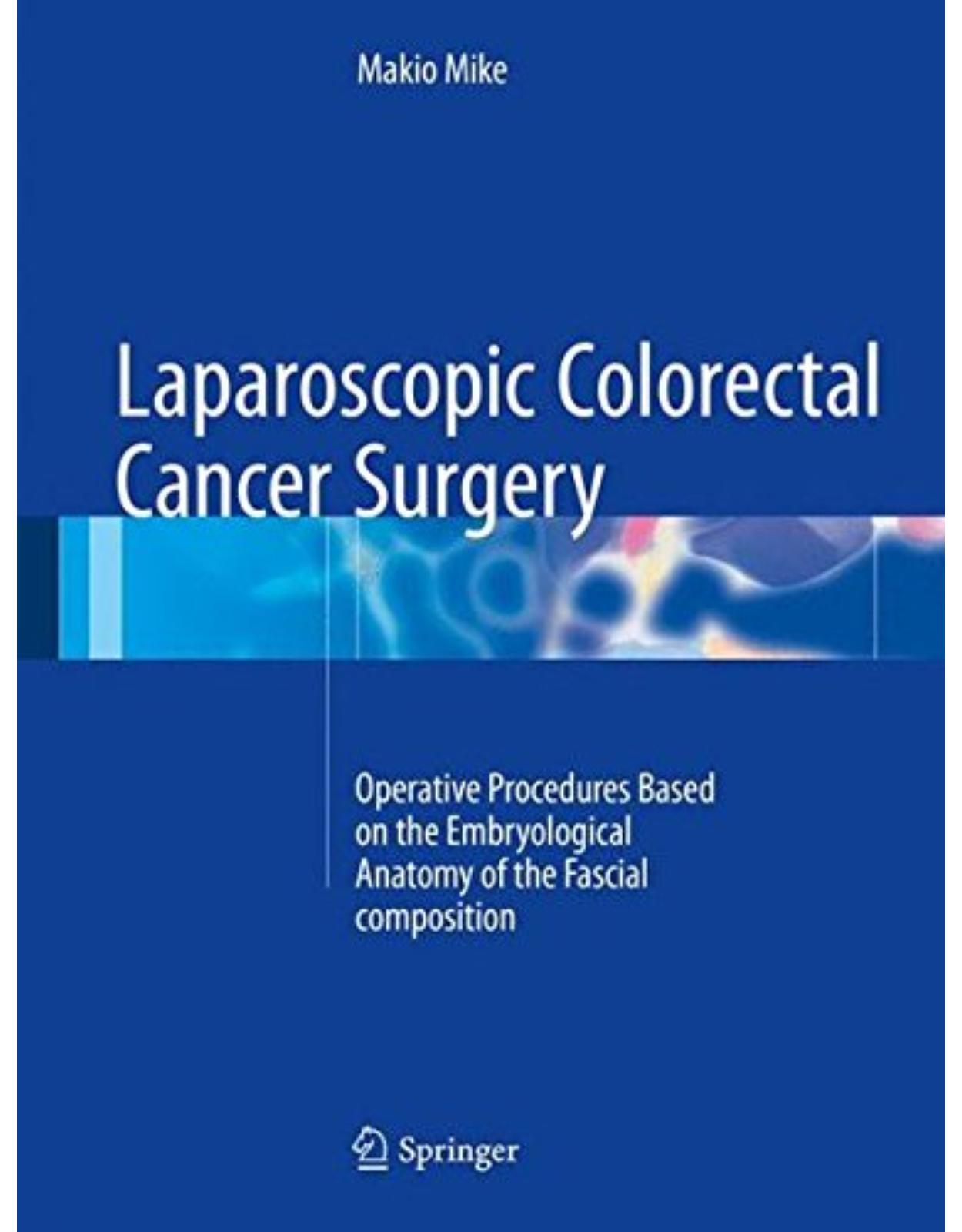
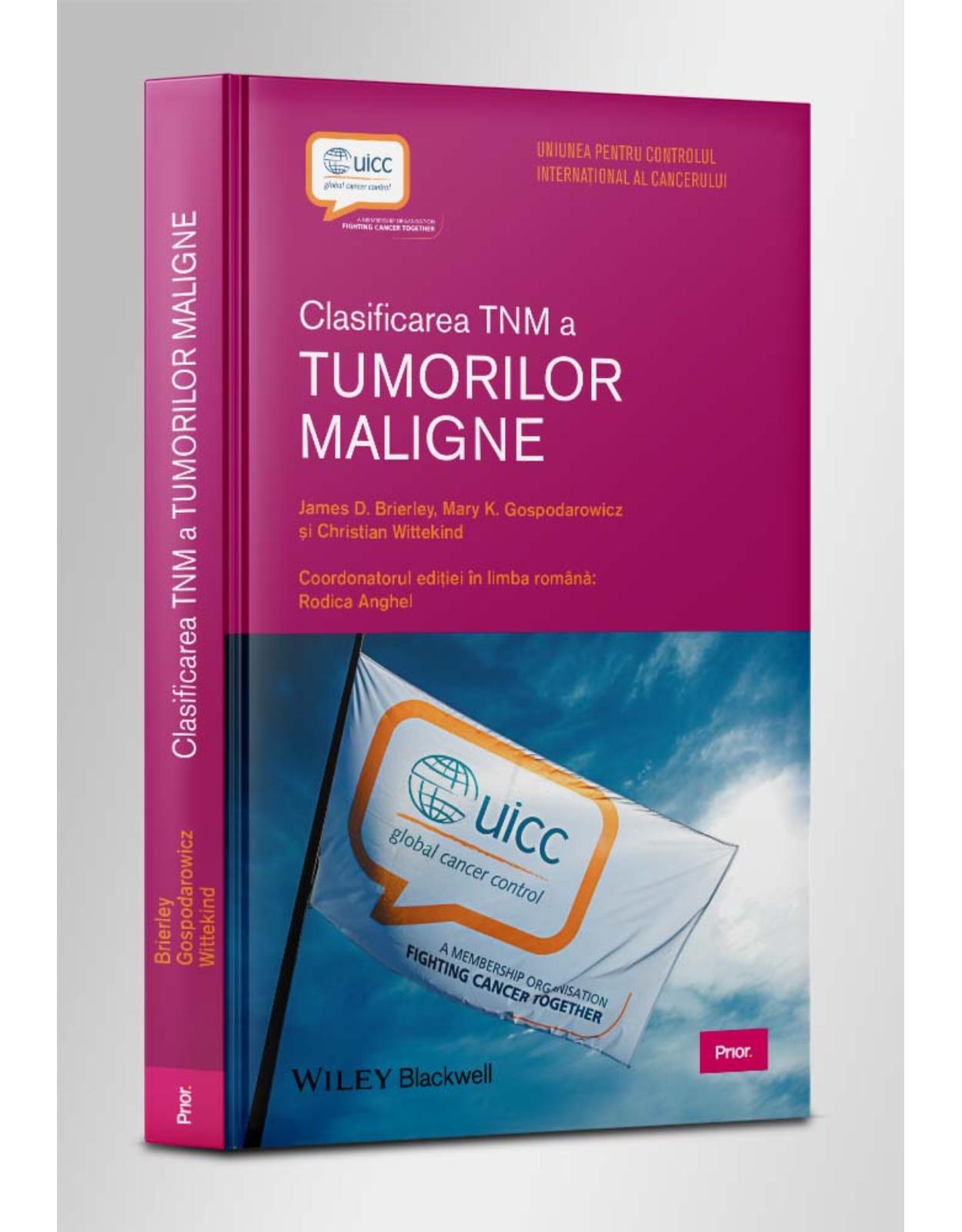
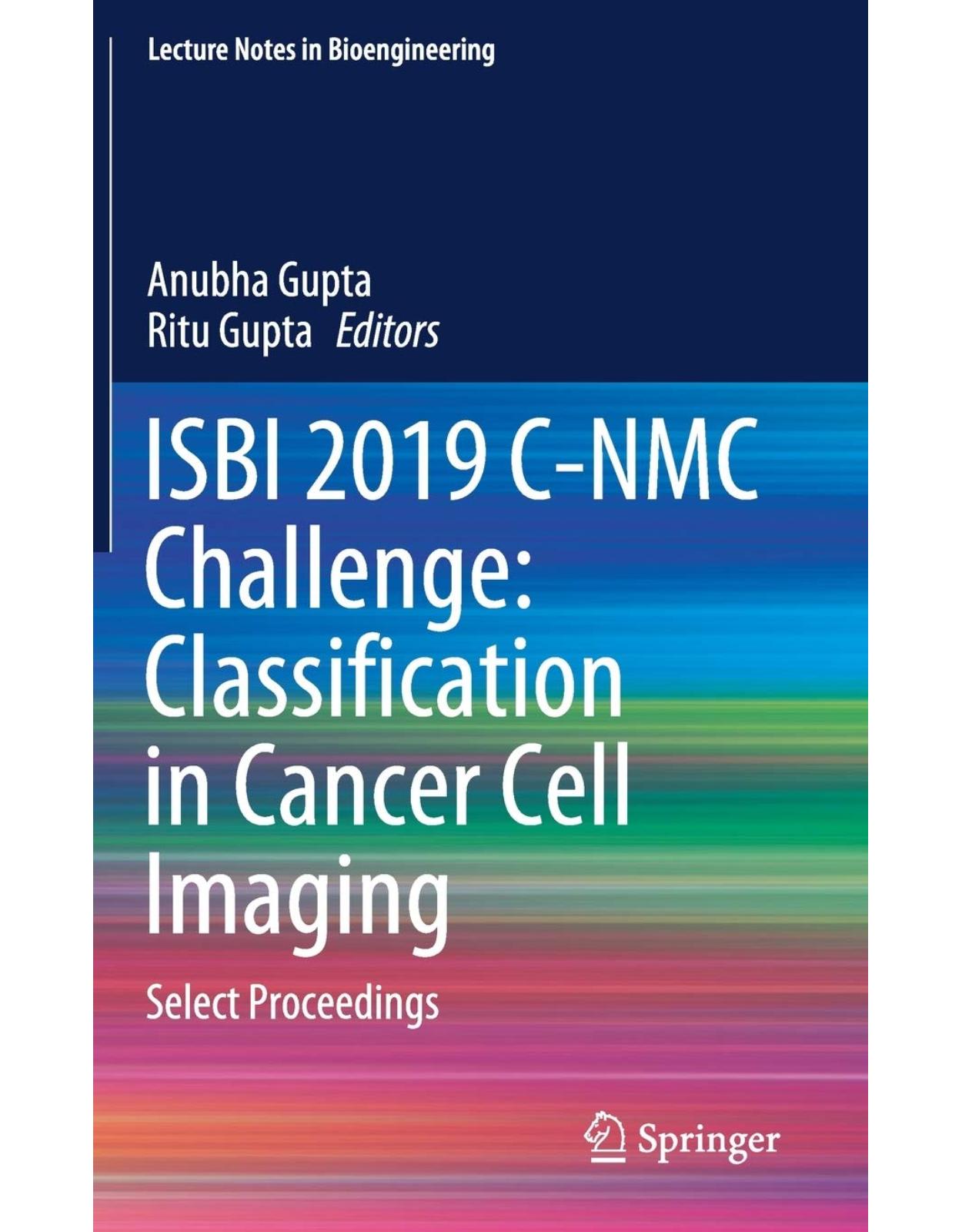
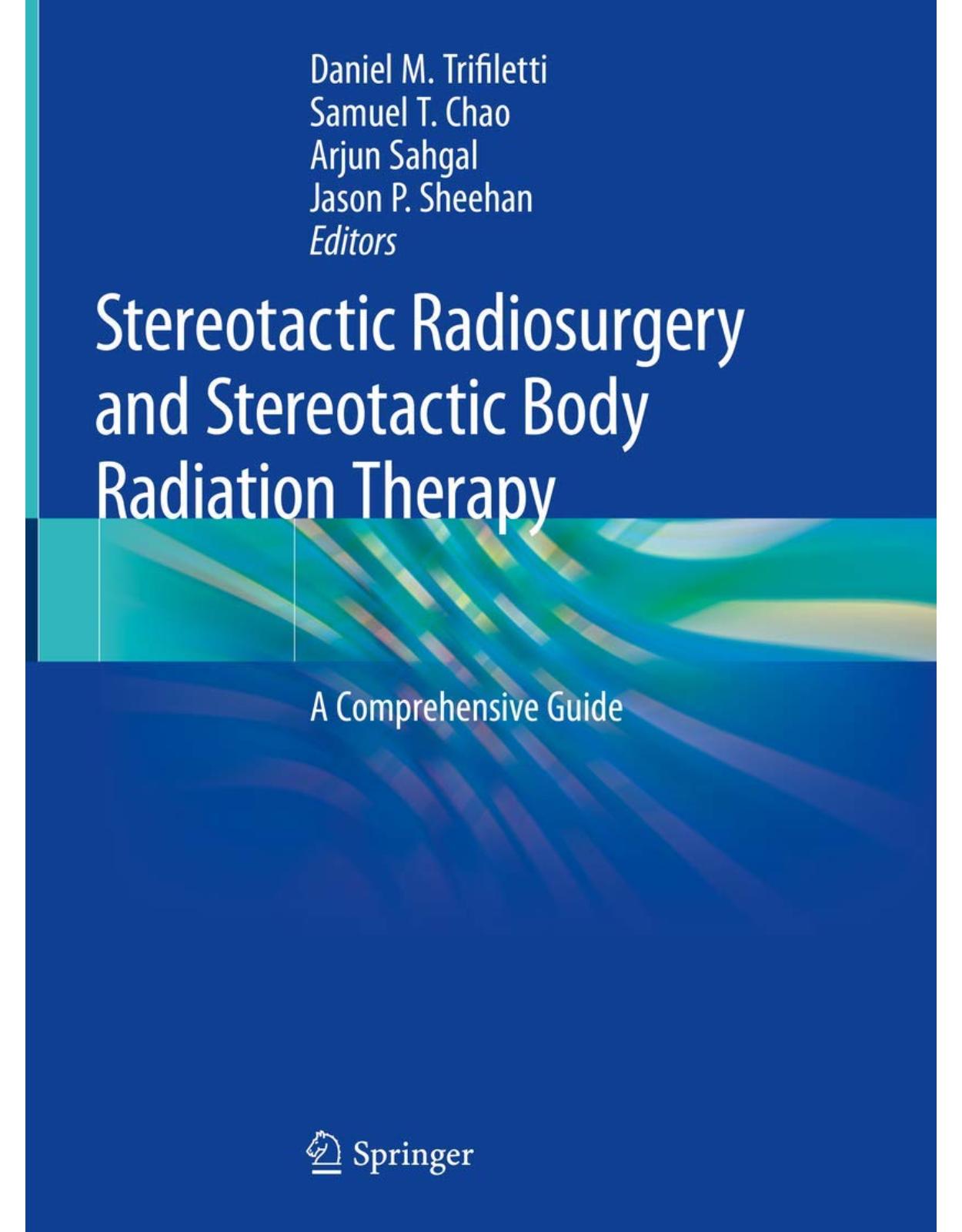
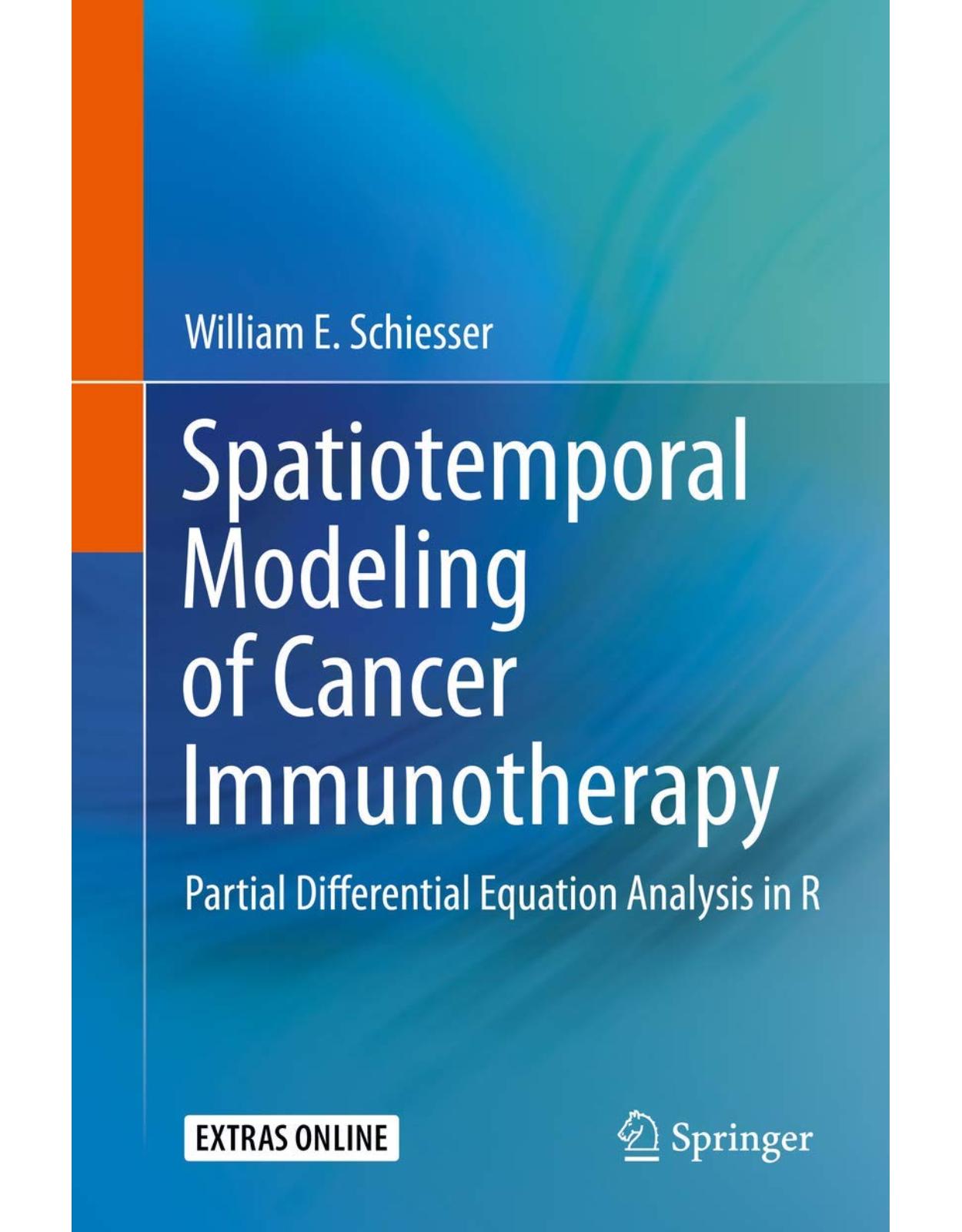
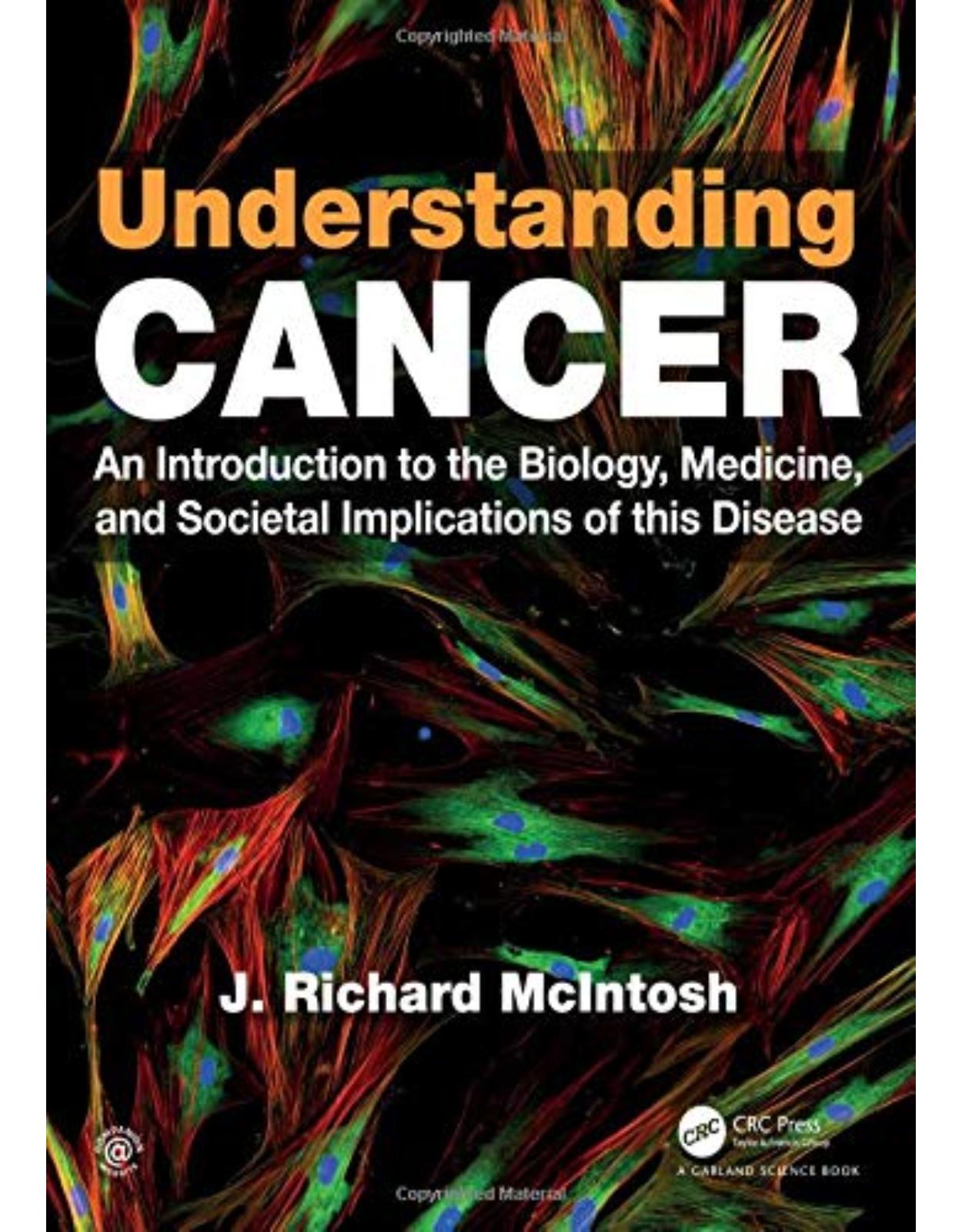
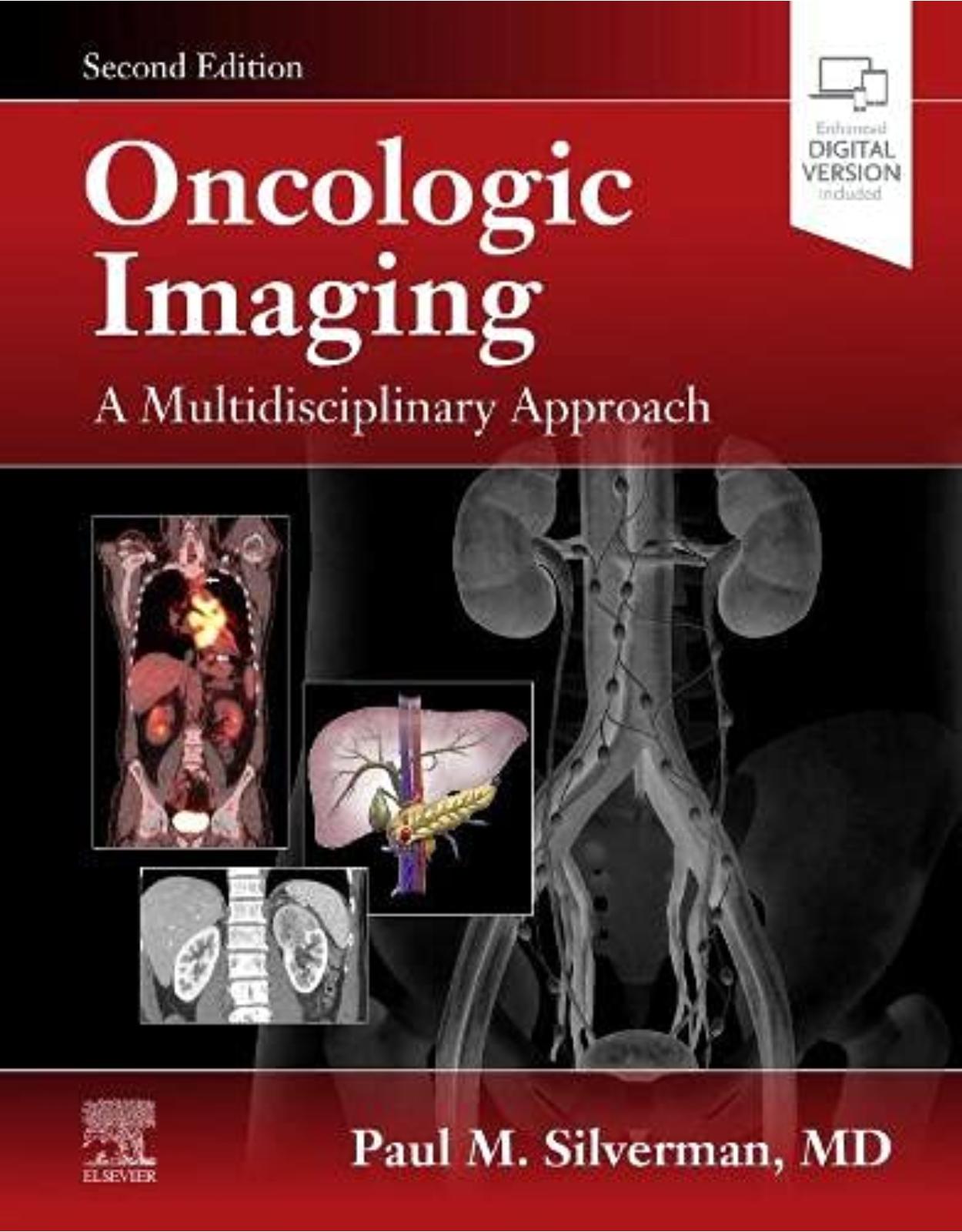
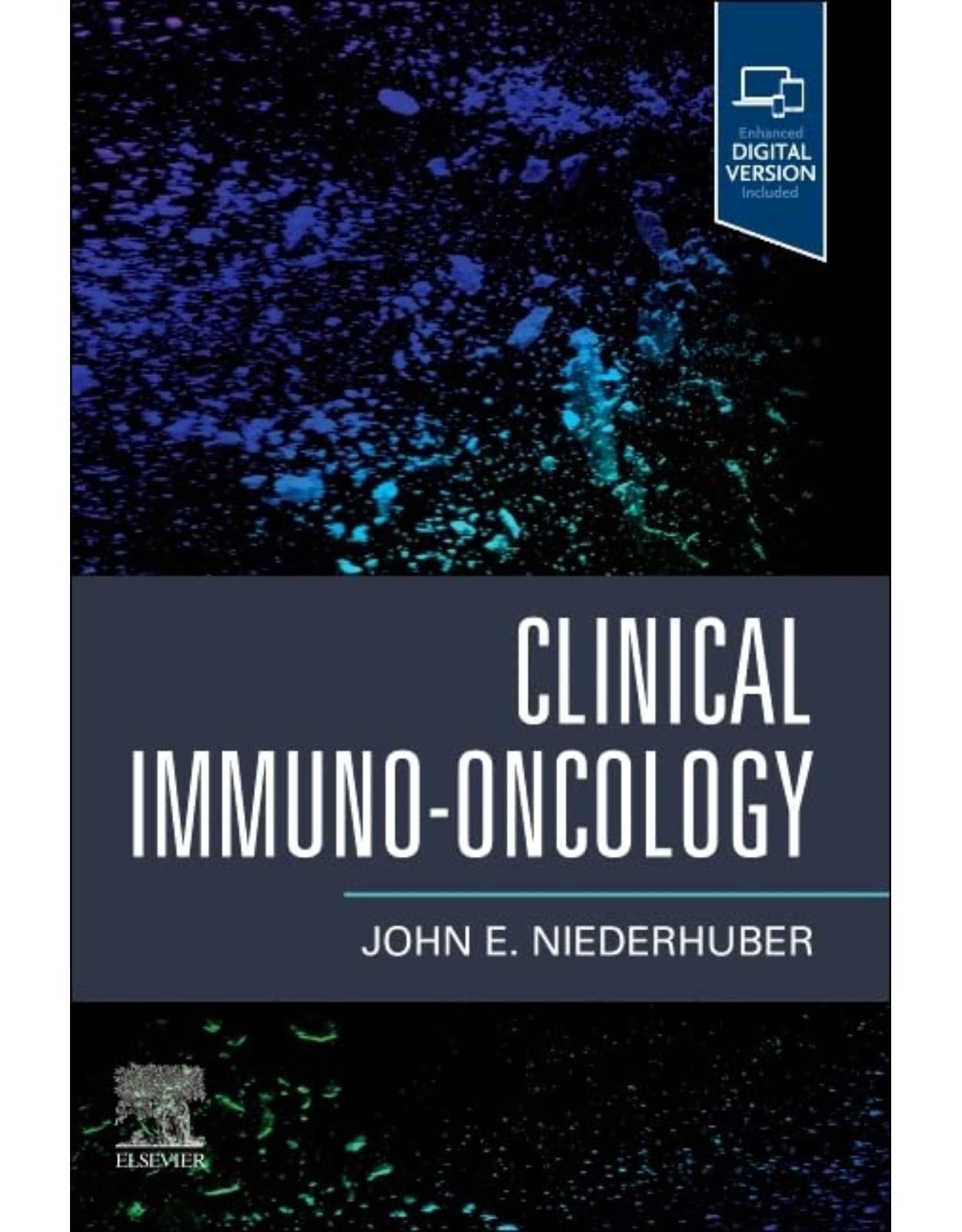
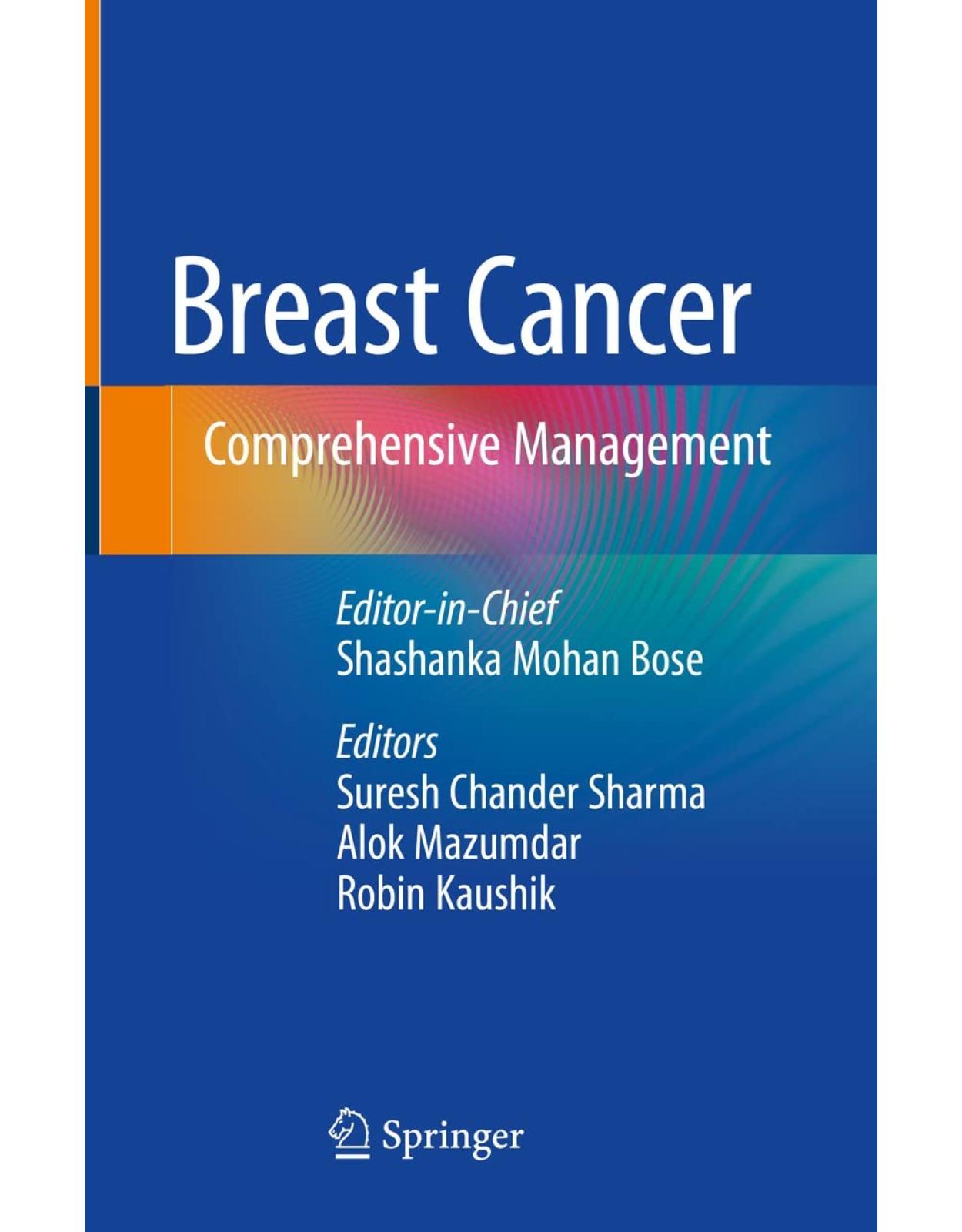
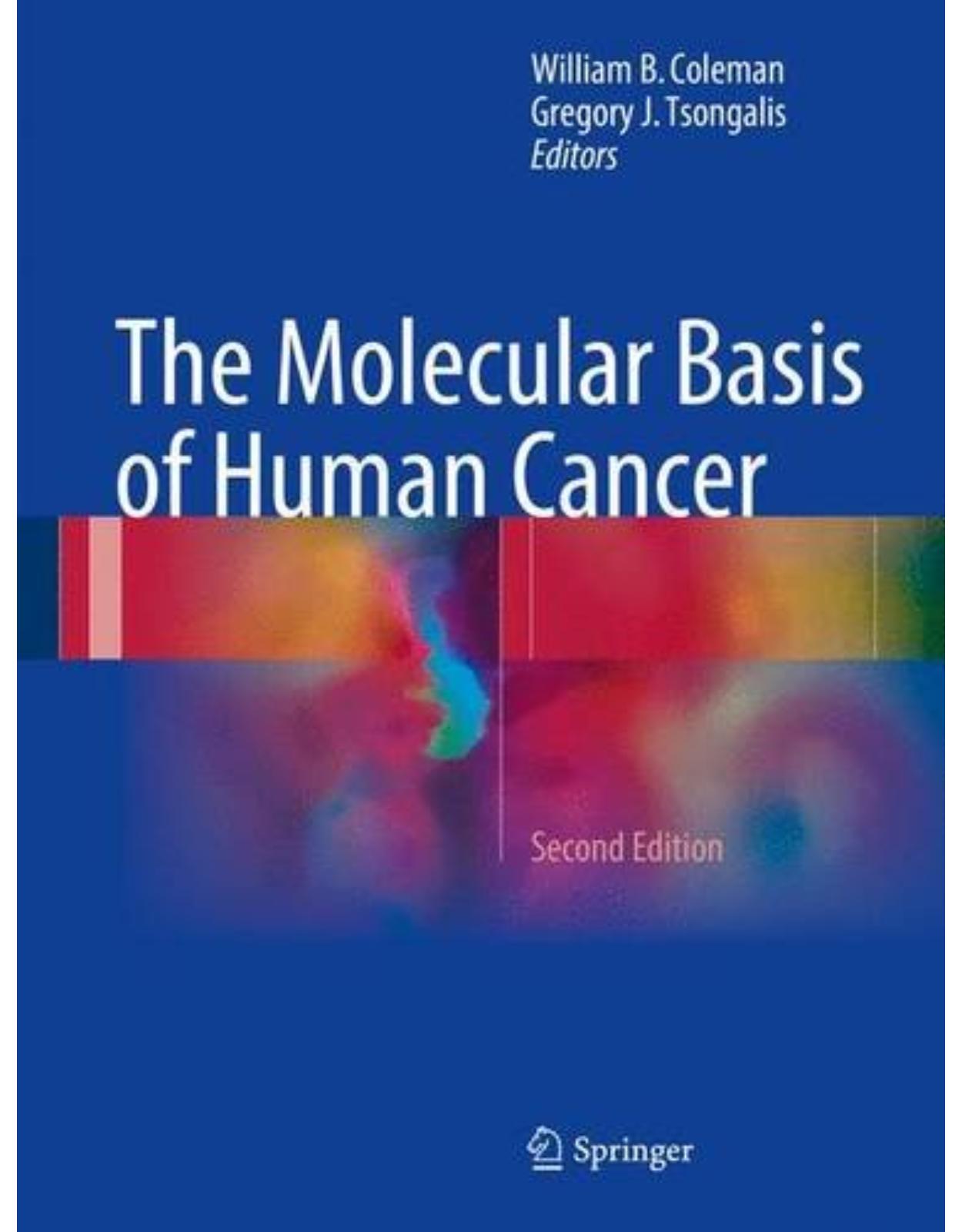
Clientii ebookshop.ro nu au adaugat inca opinii pentru acest produs. Fii primul care adauga o parere, folosind formularul de mai jos.